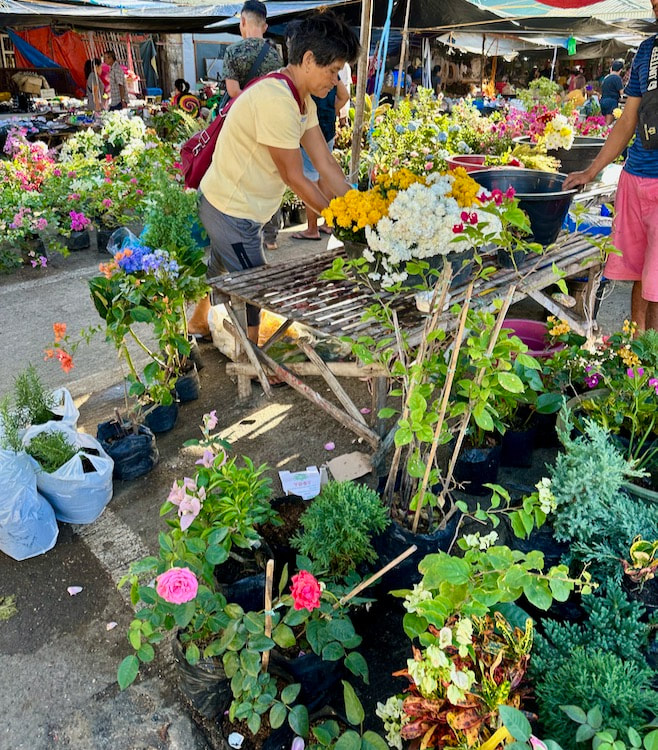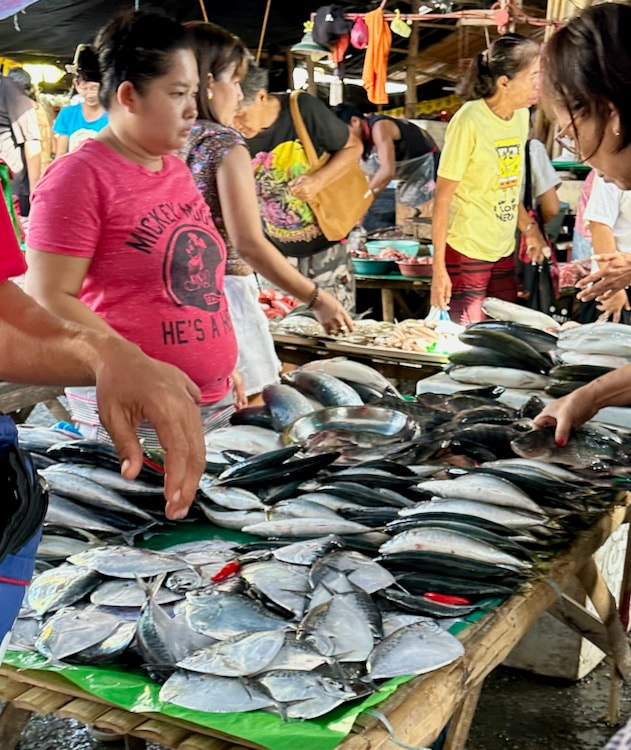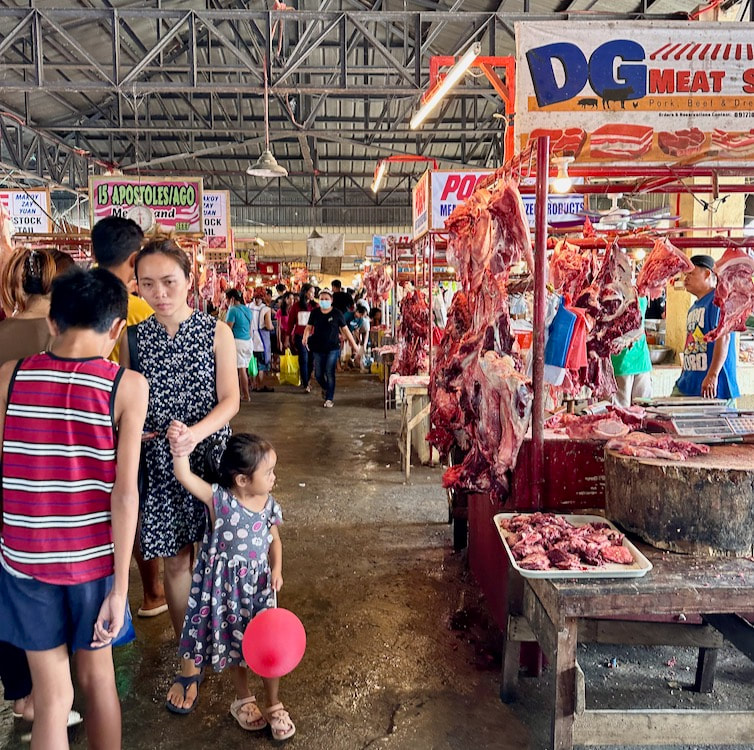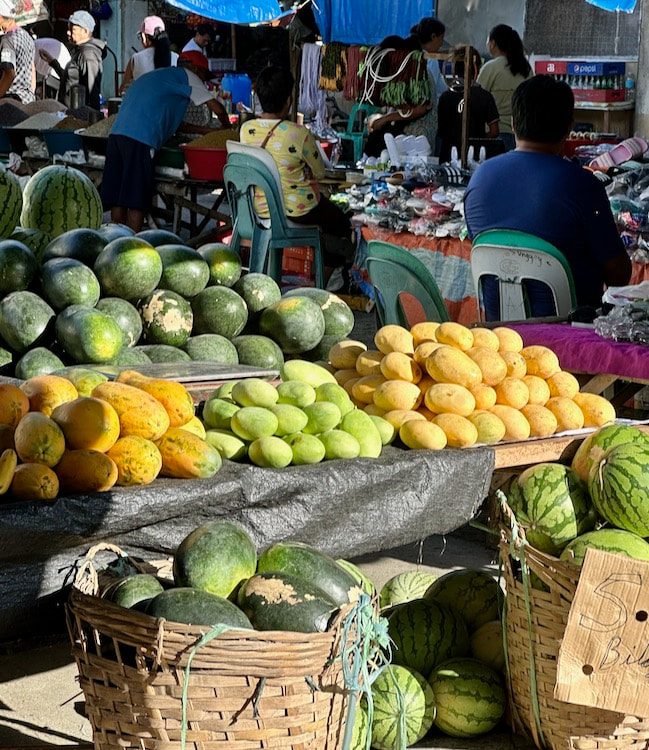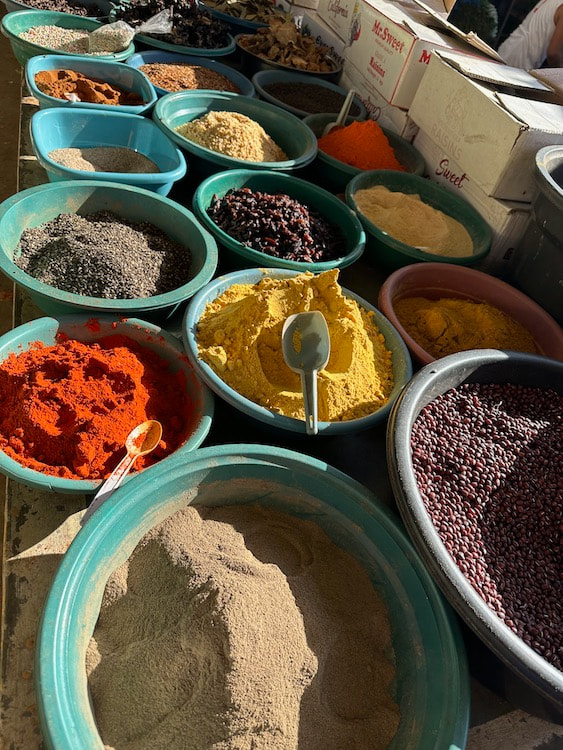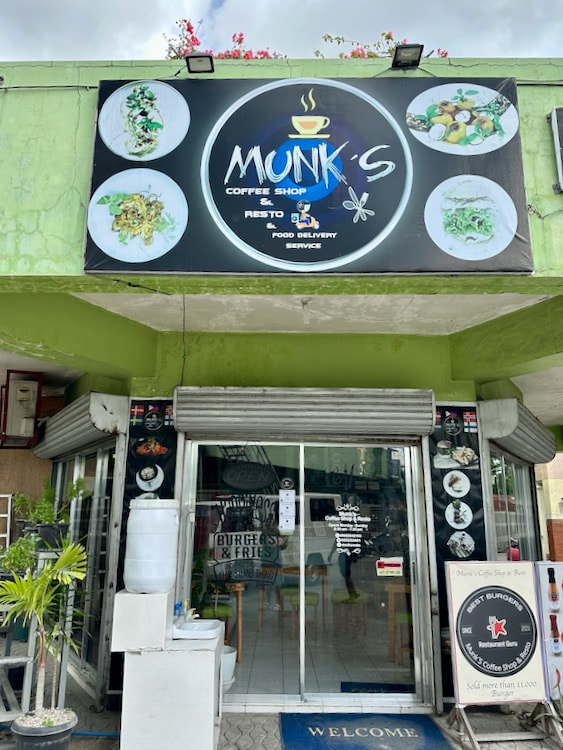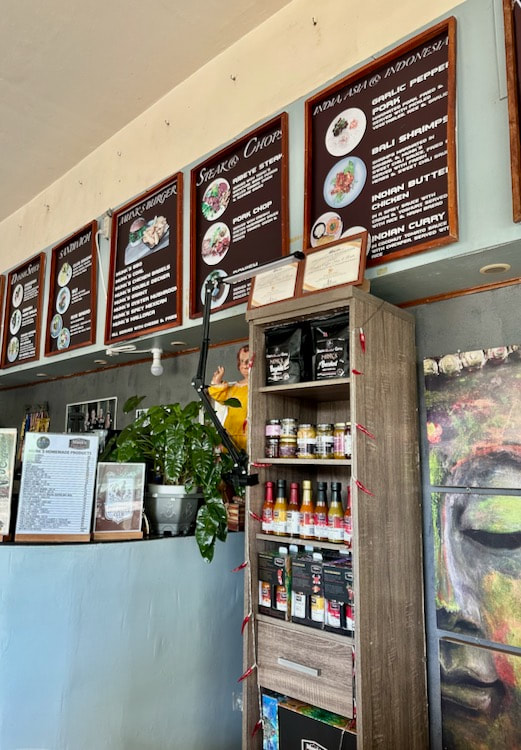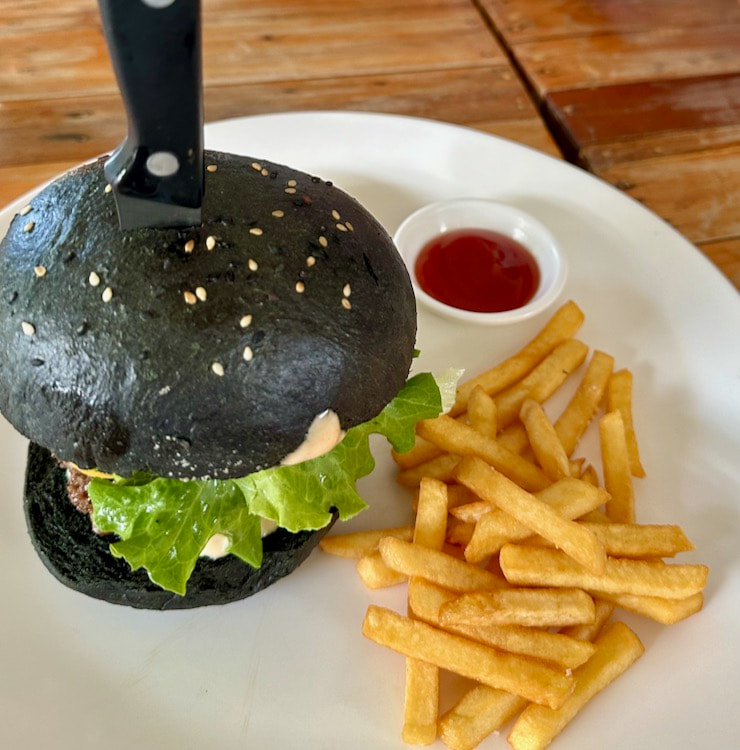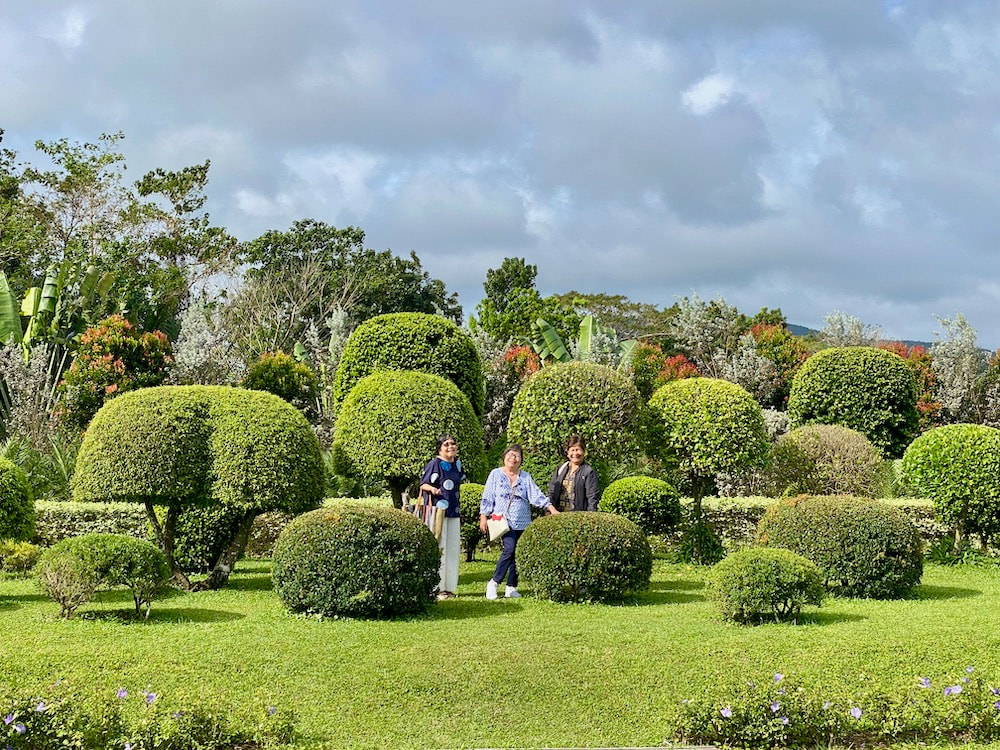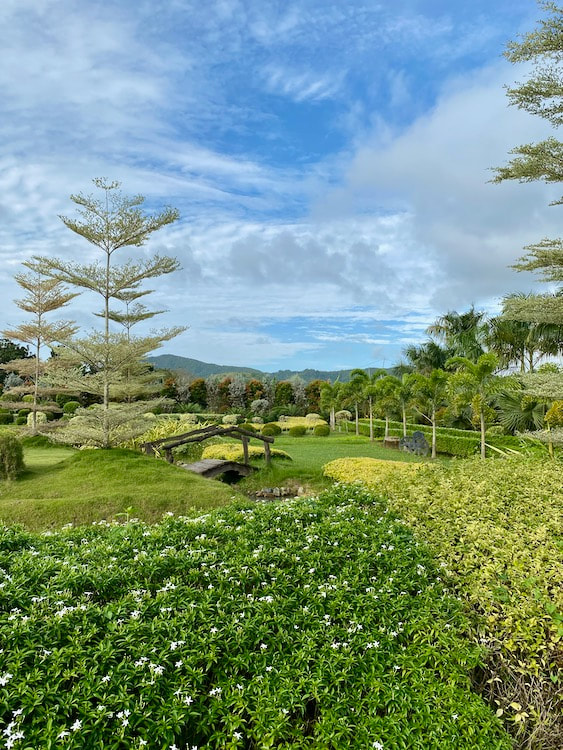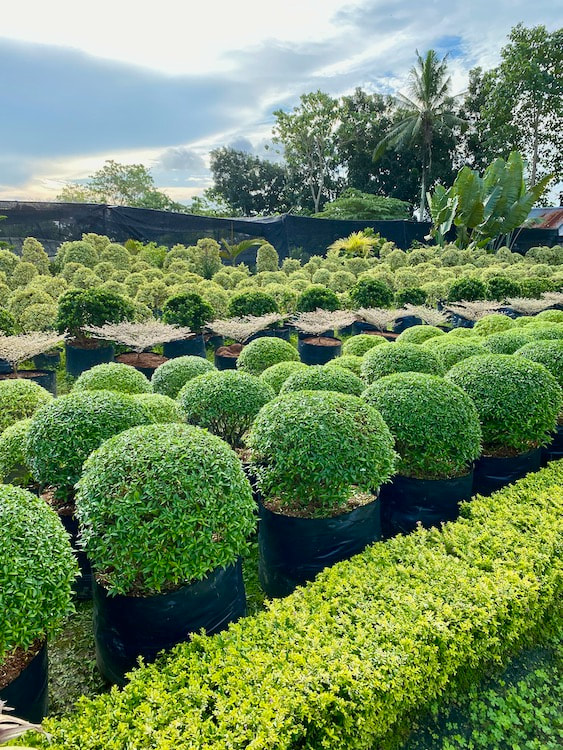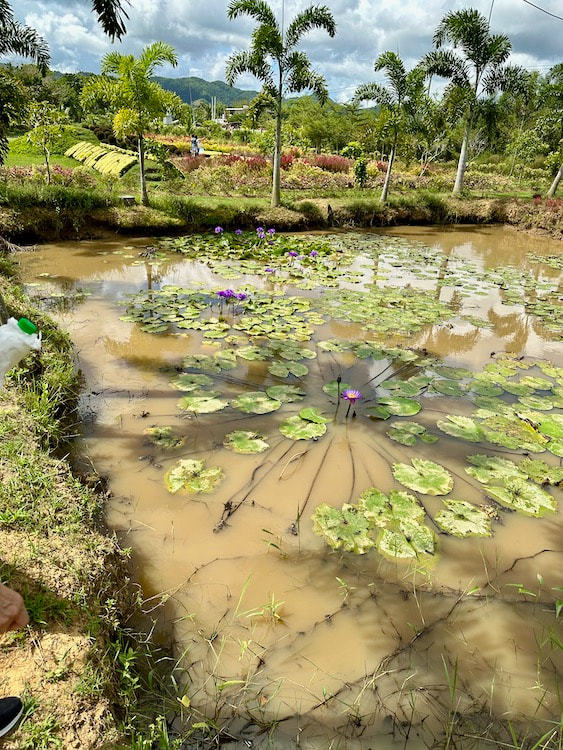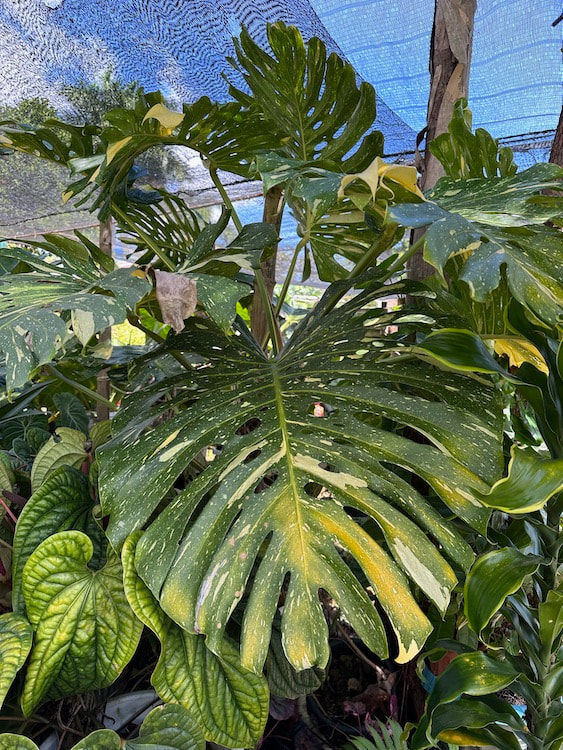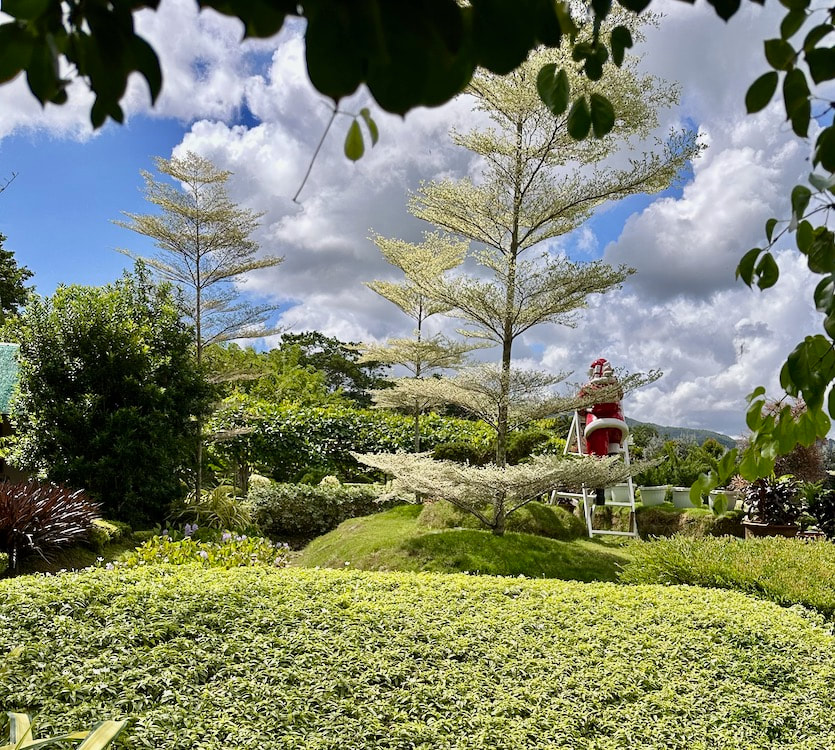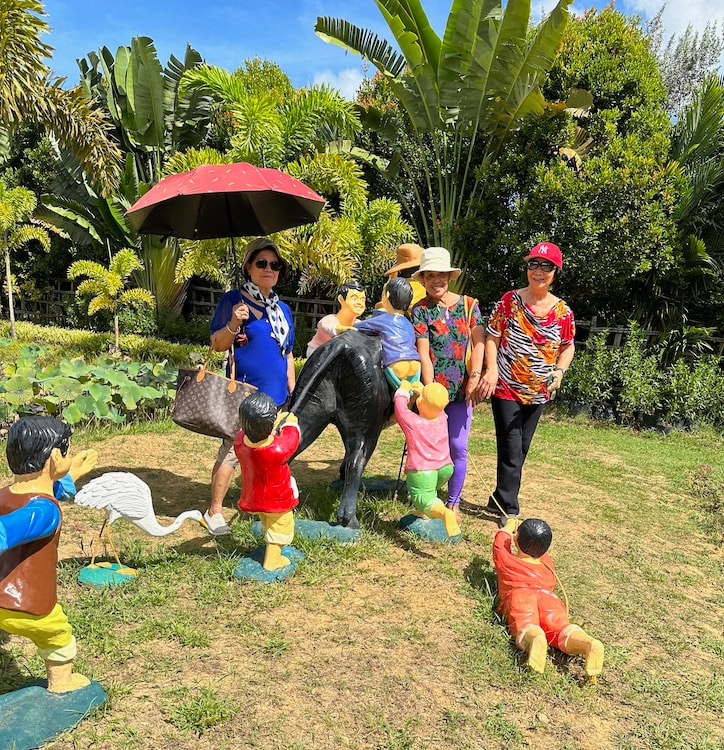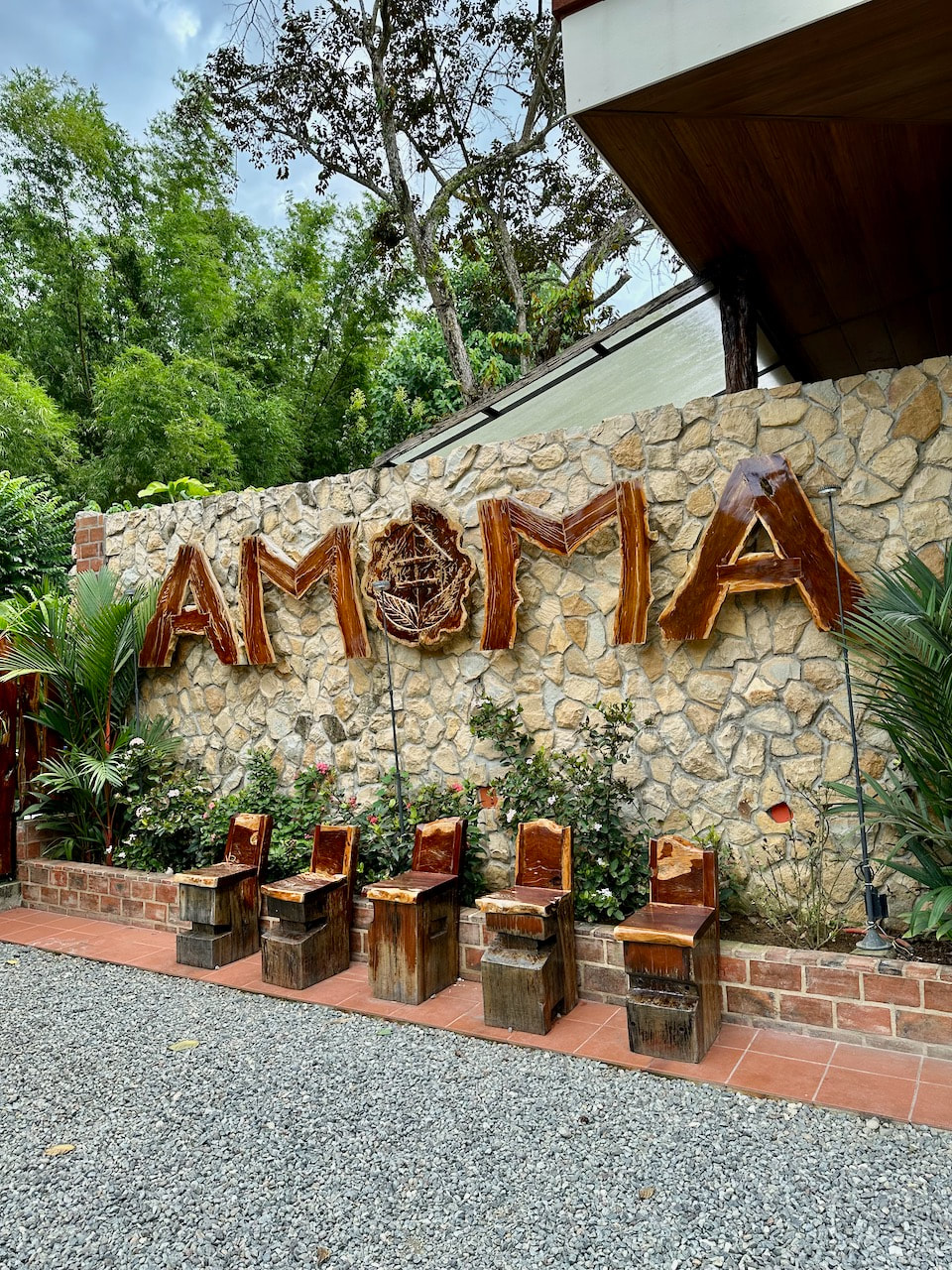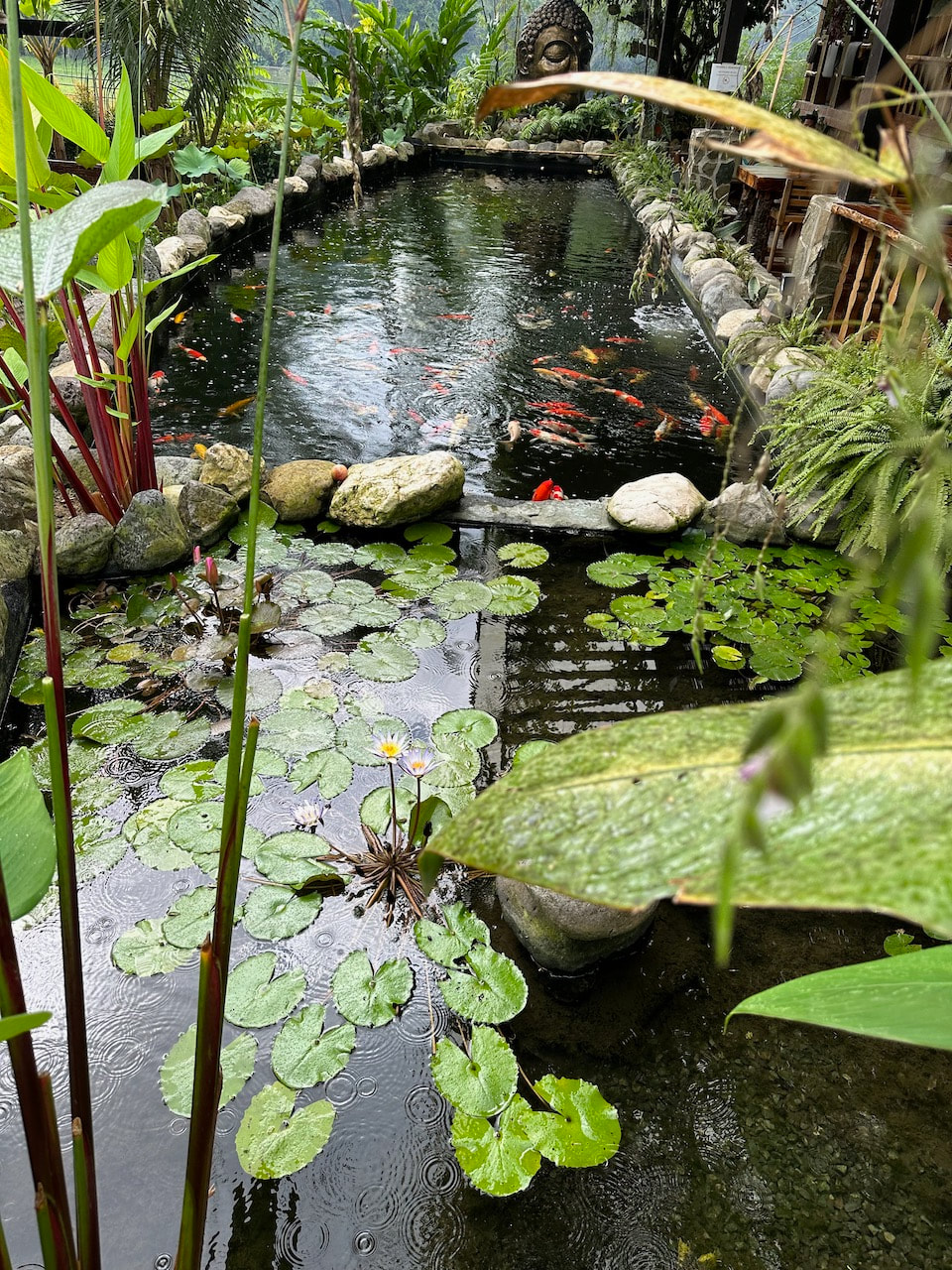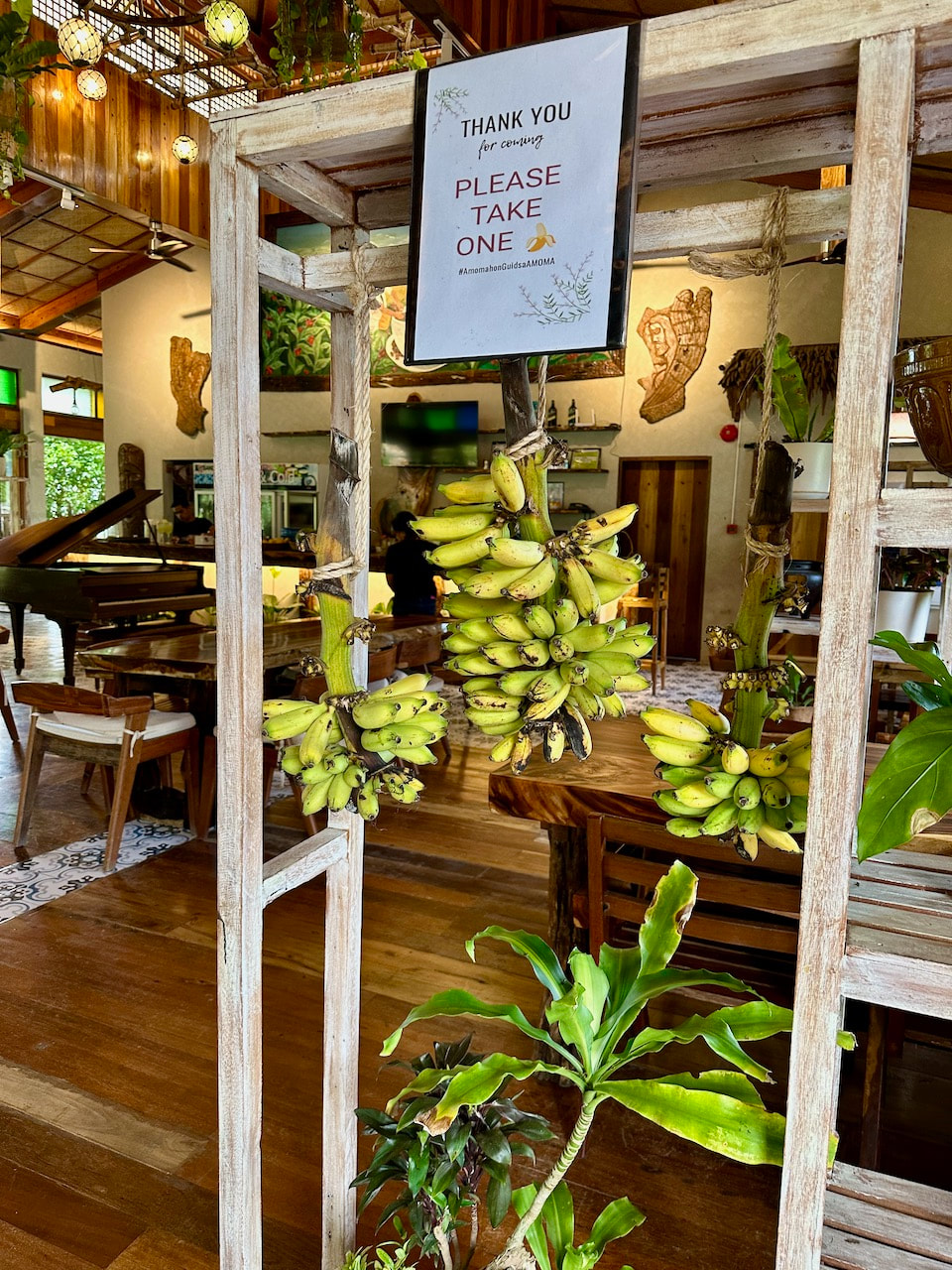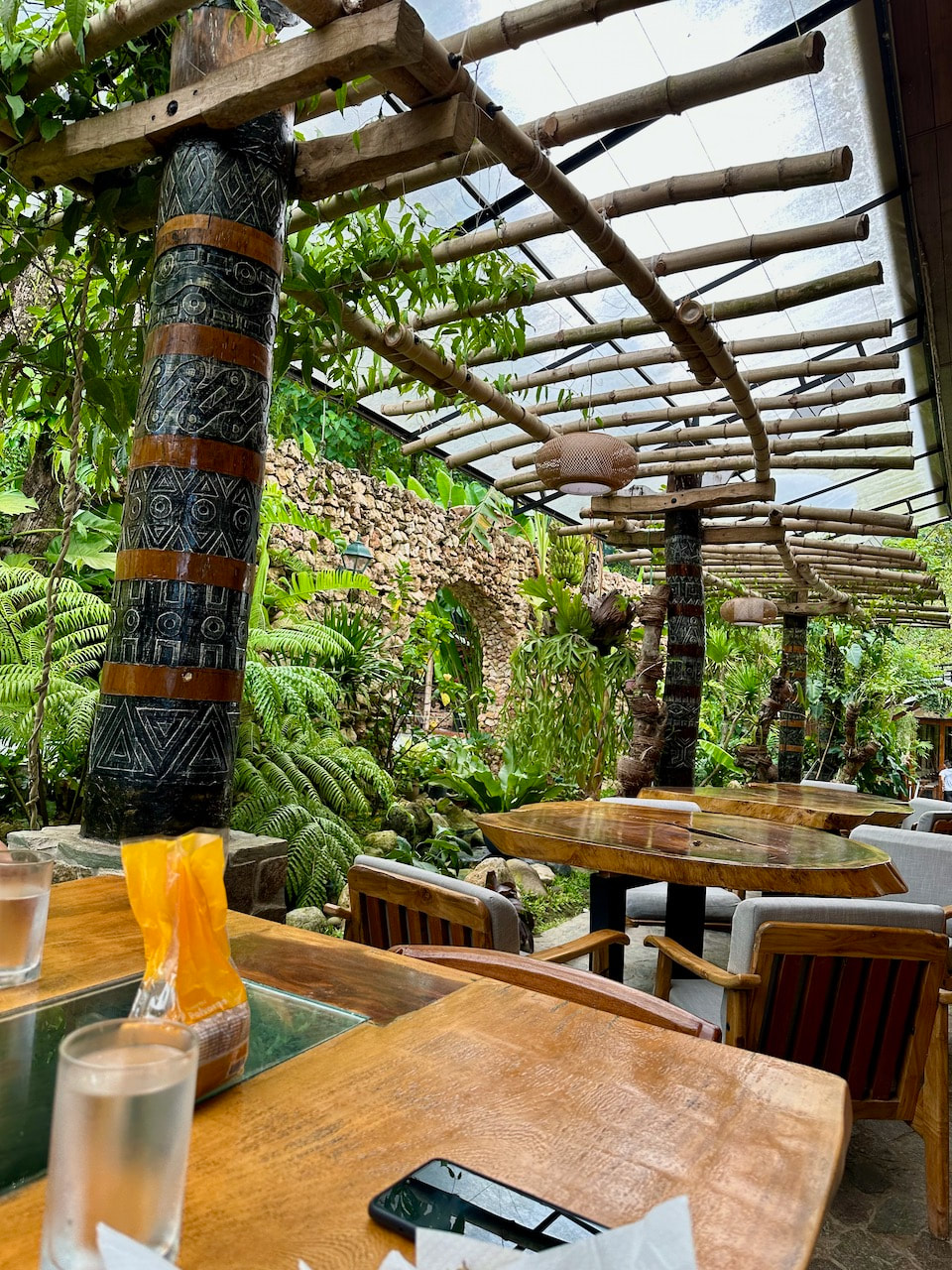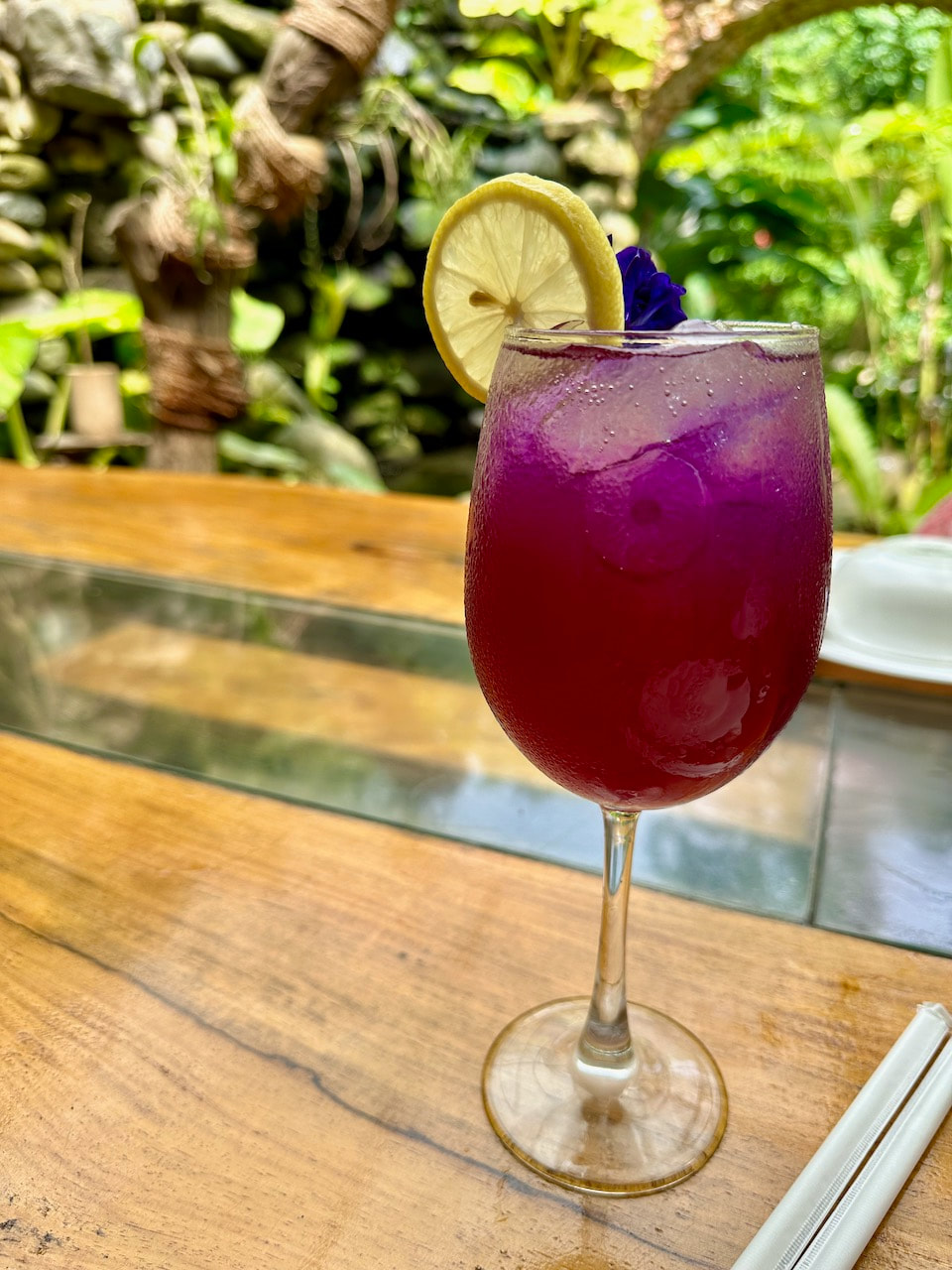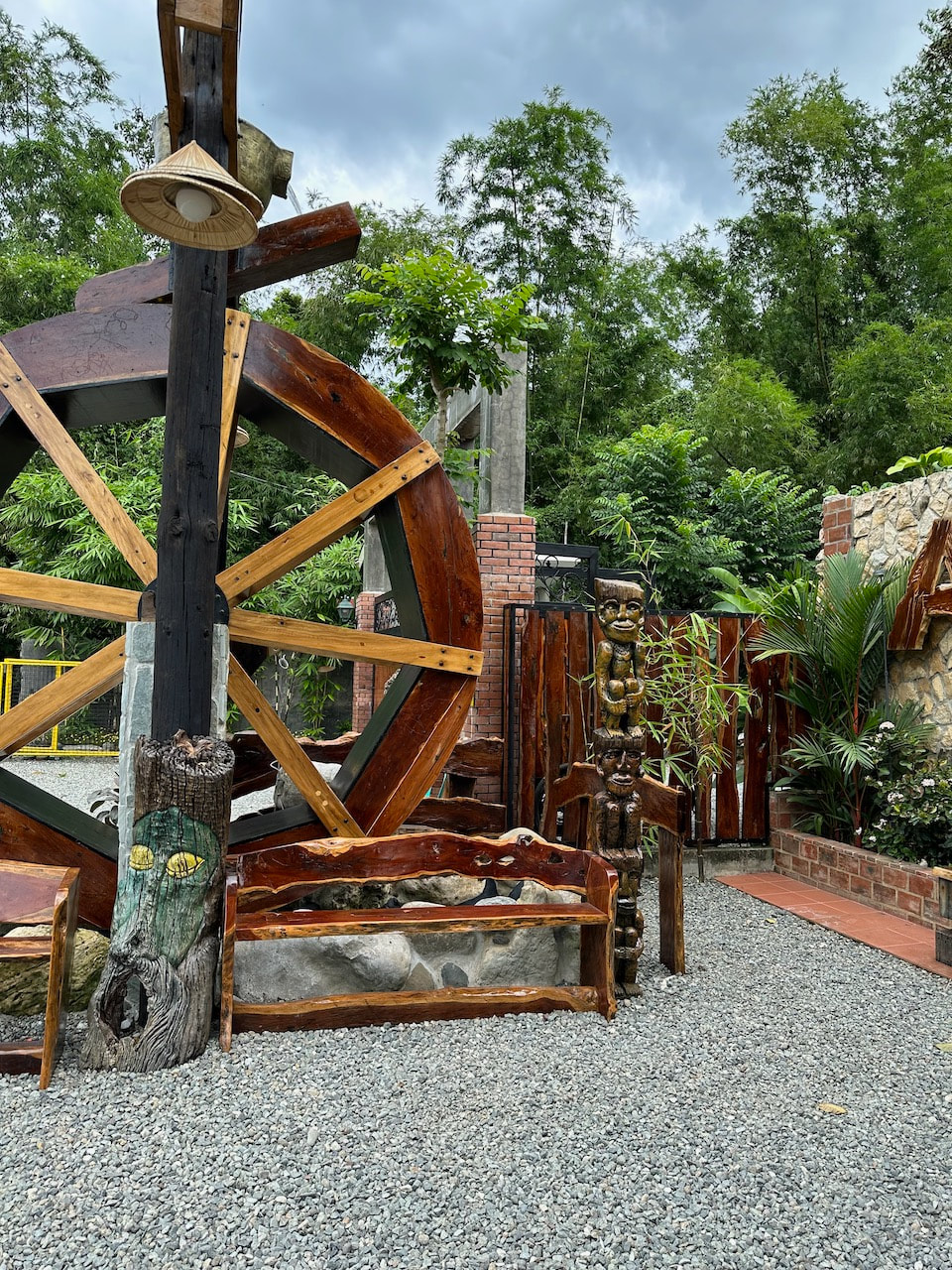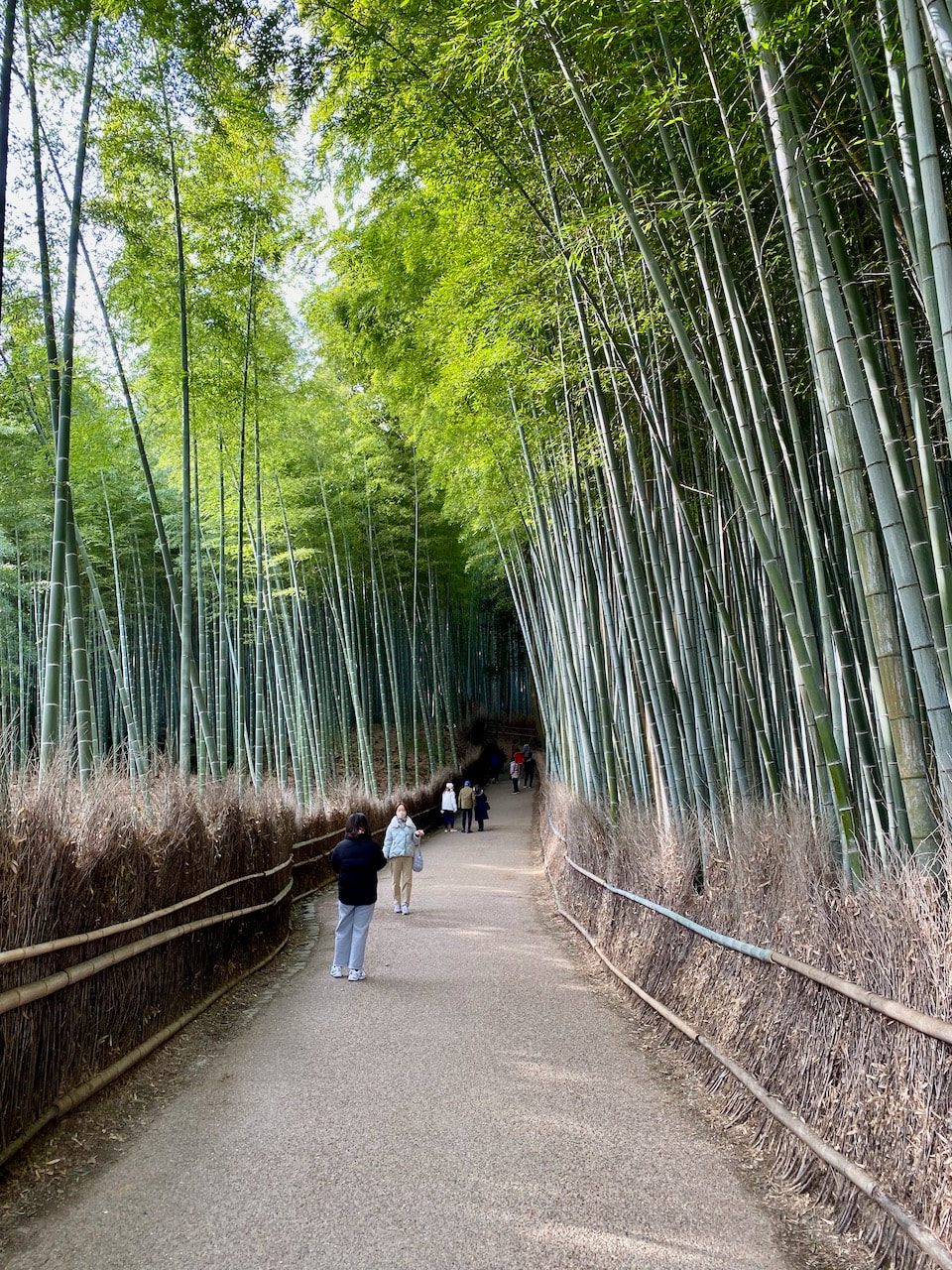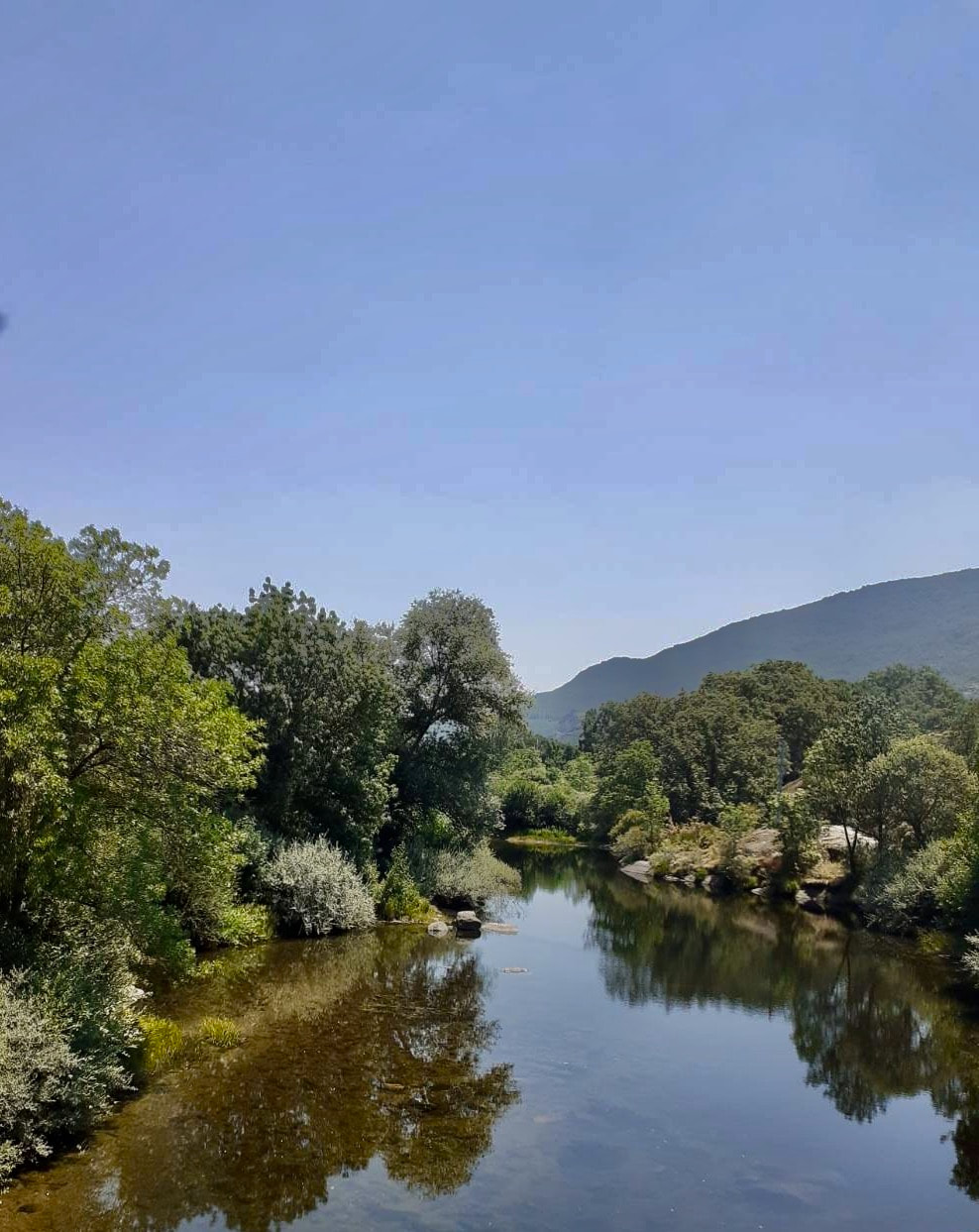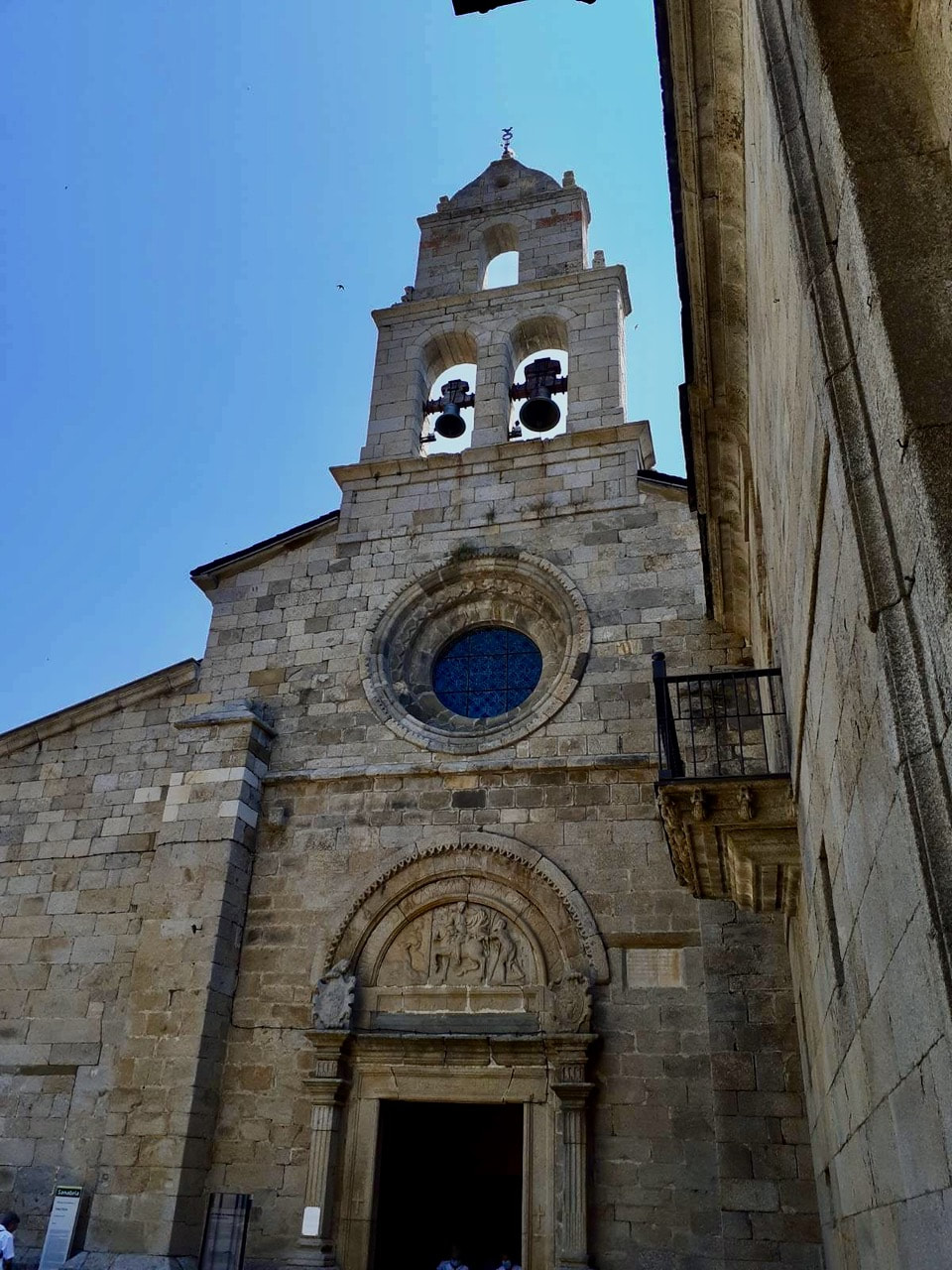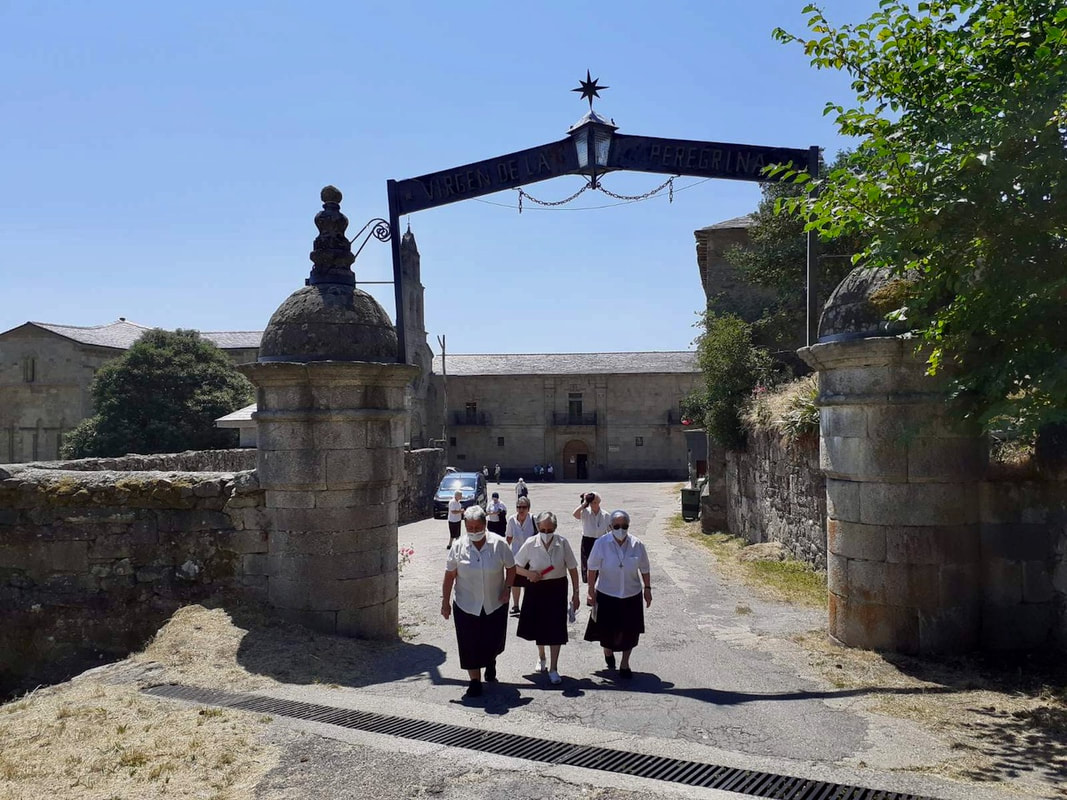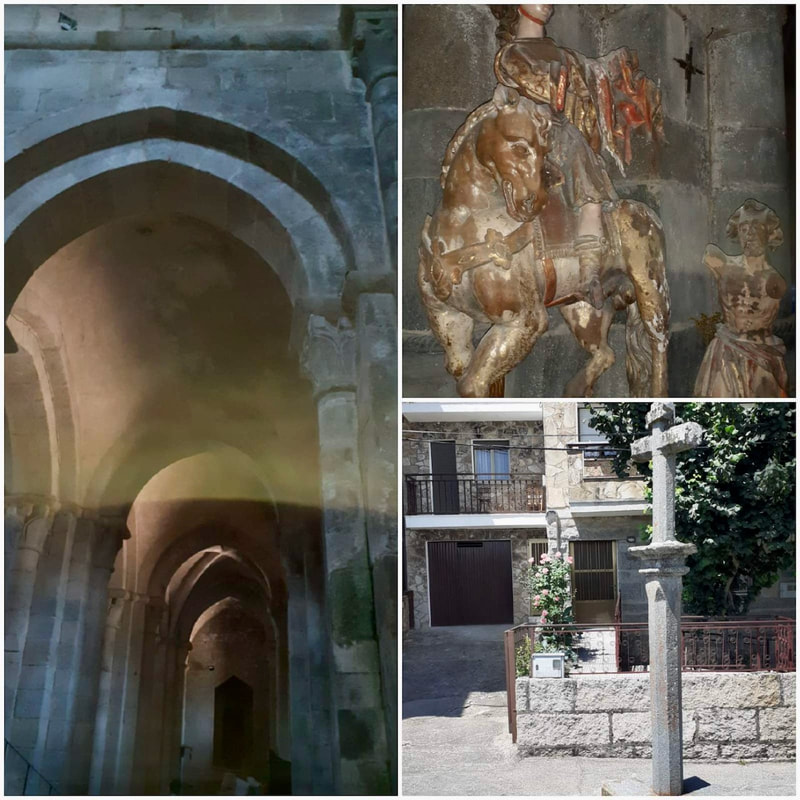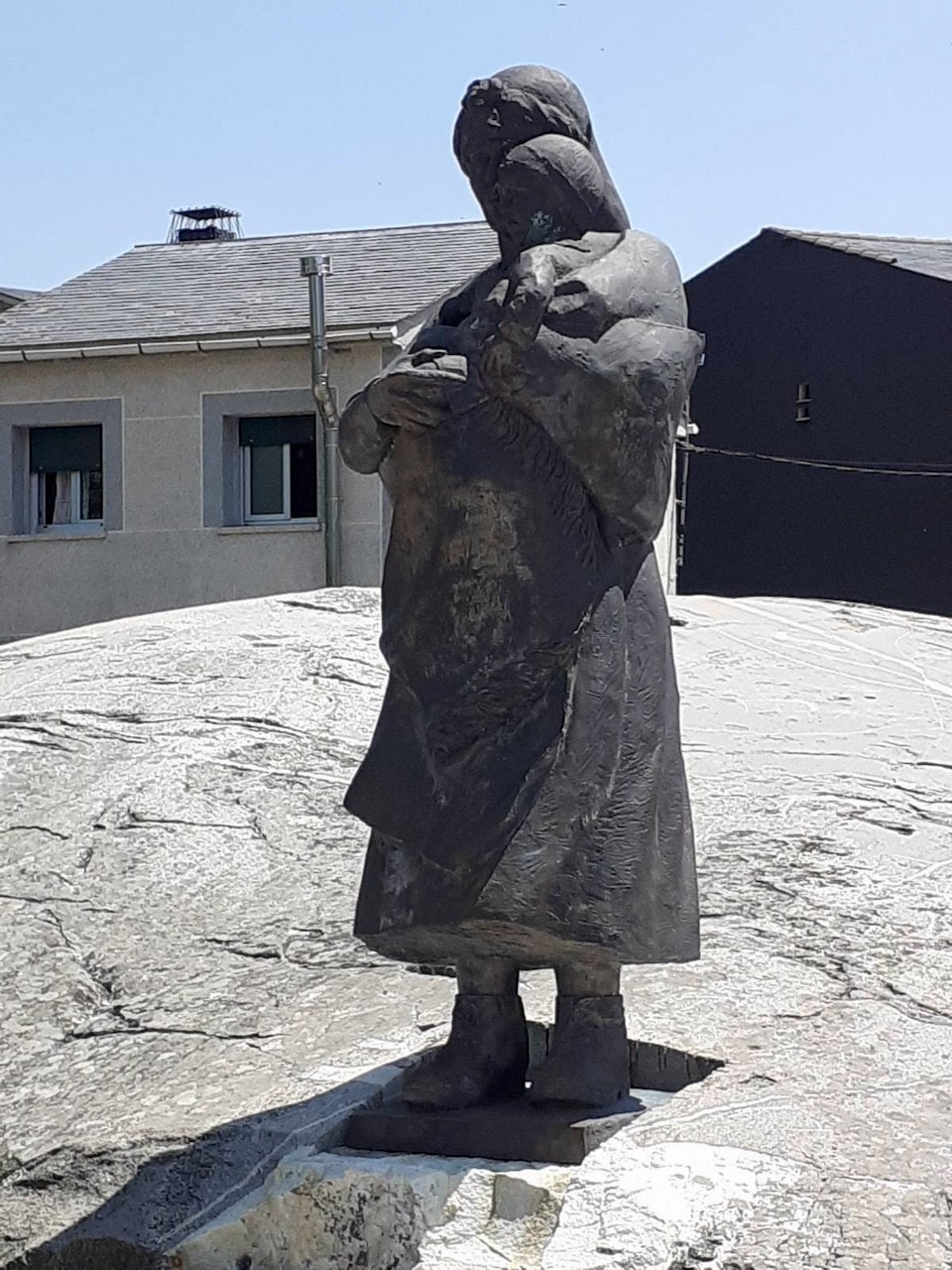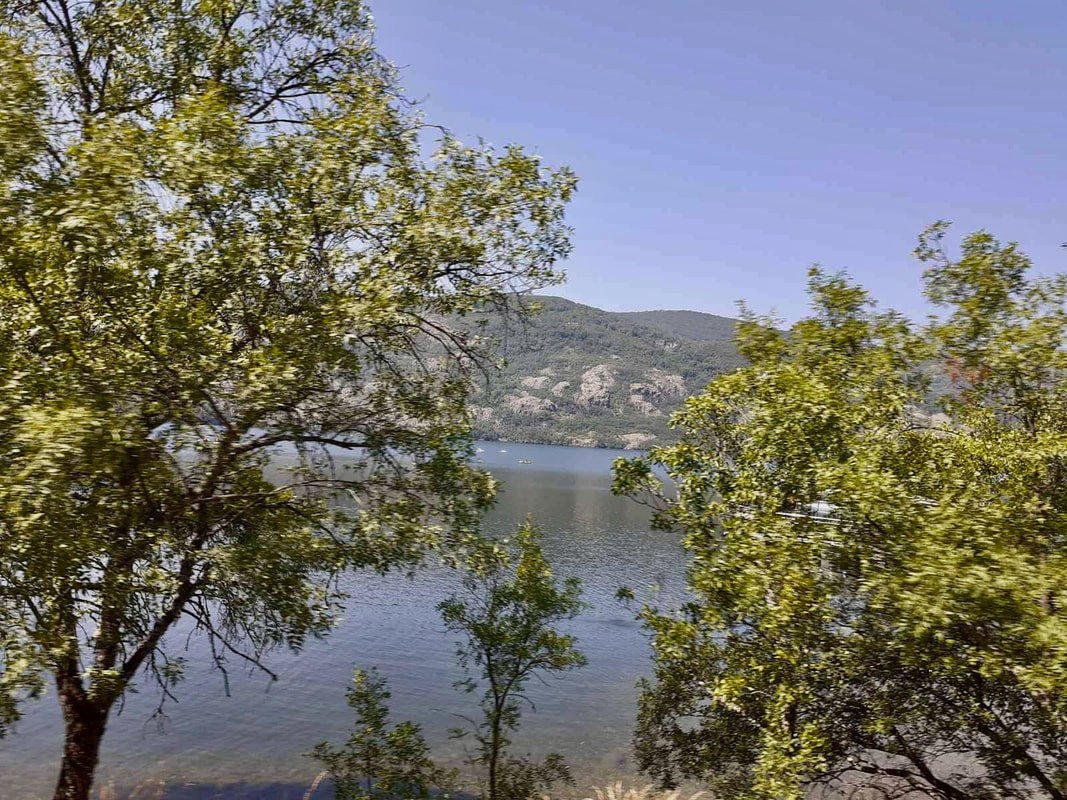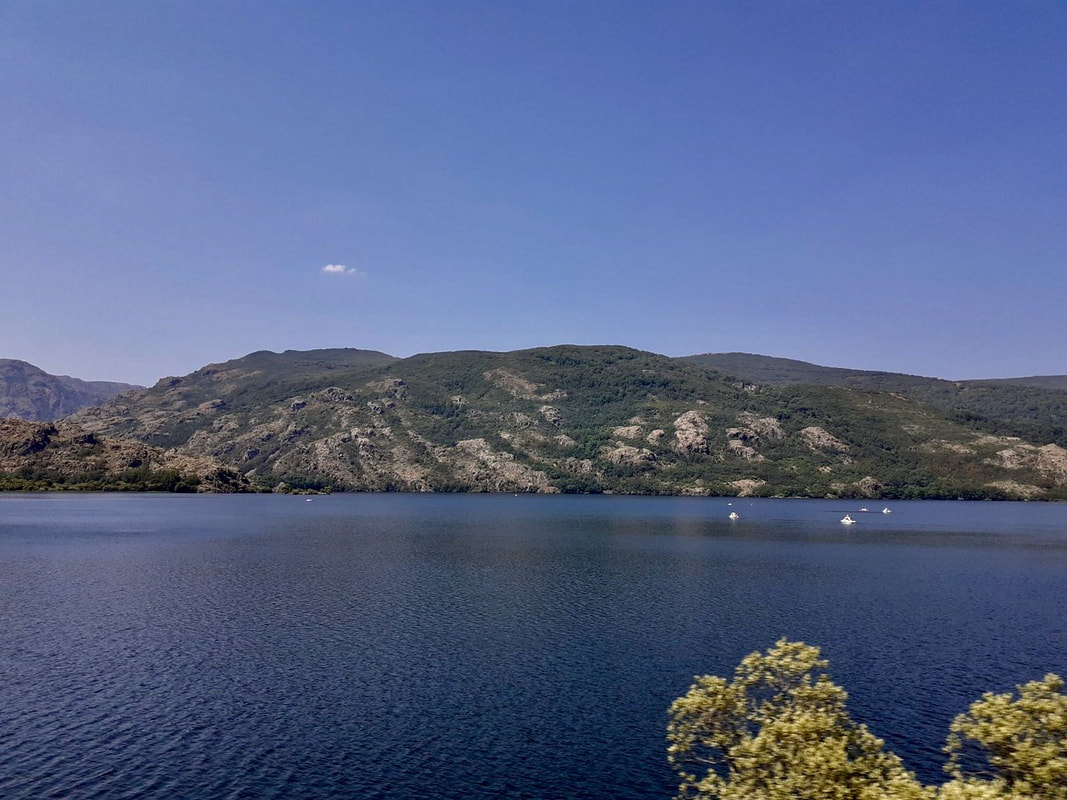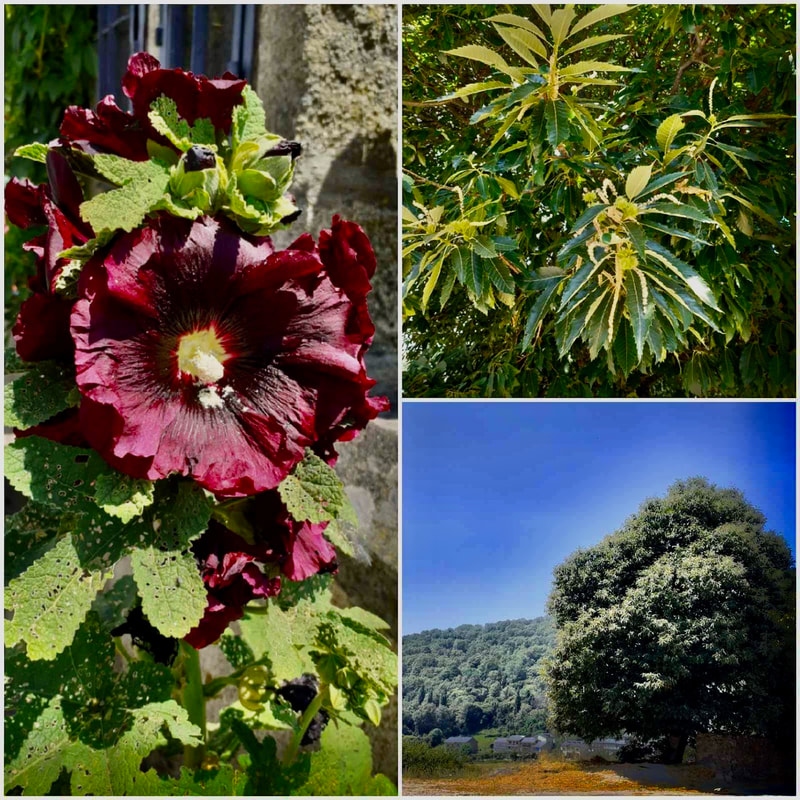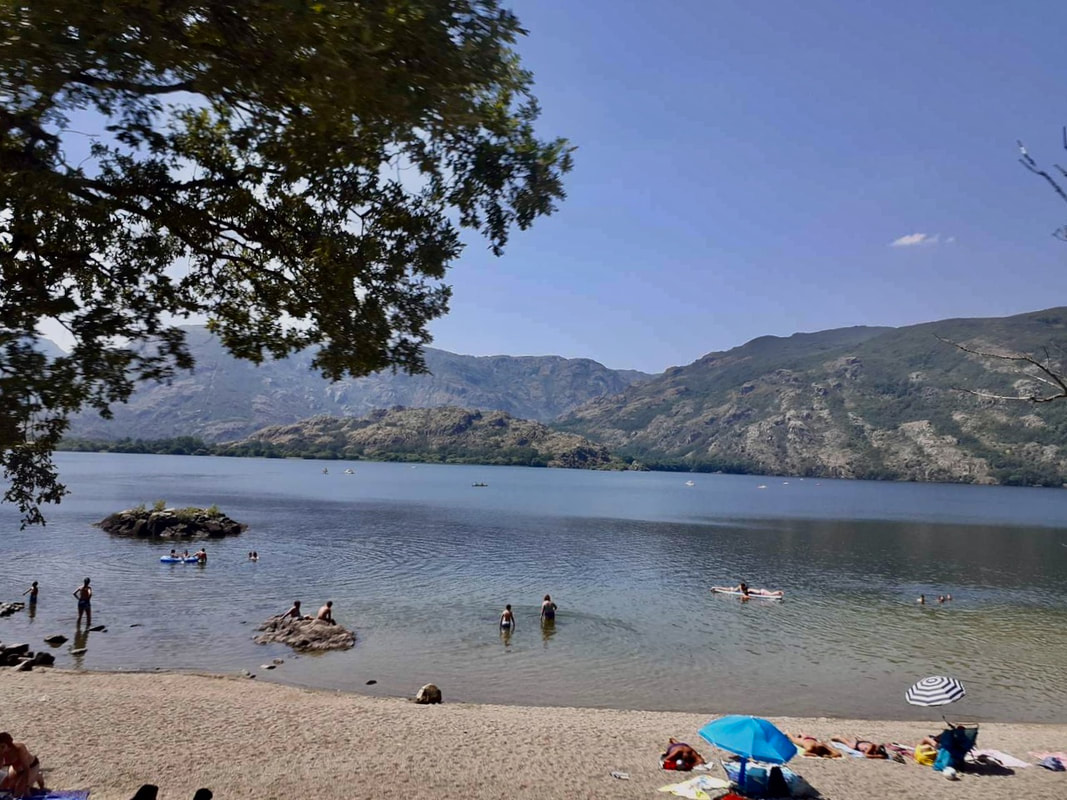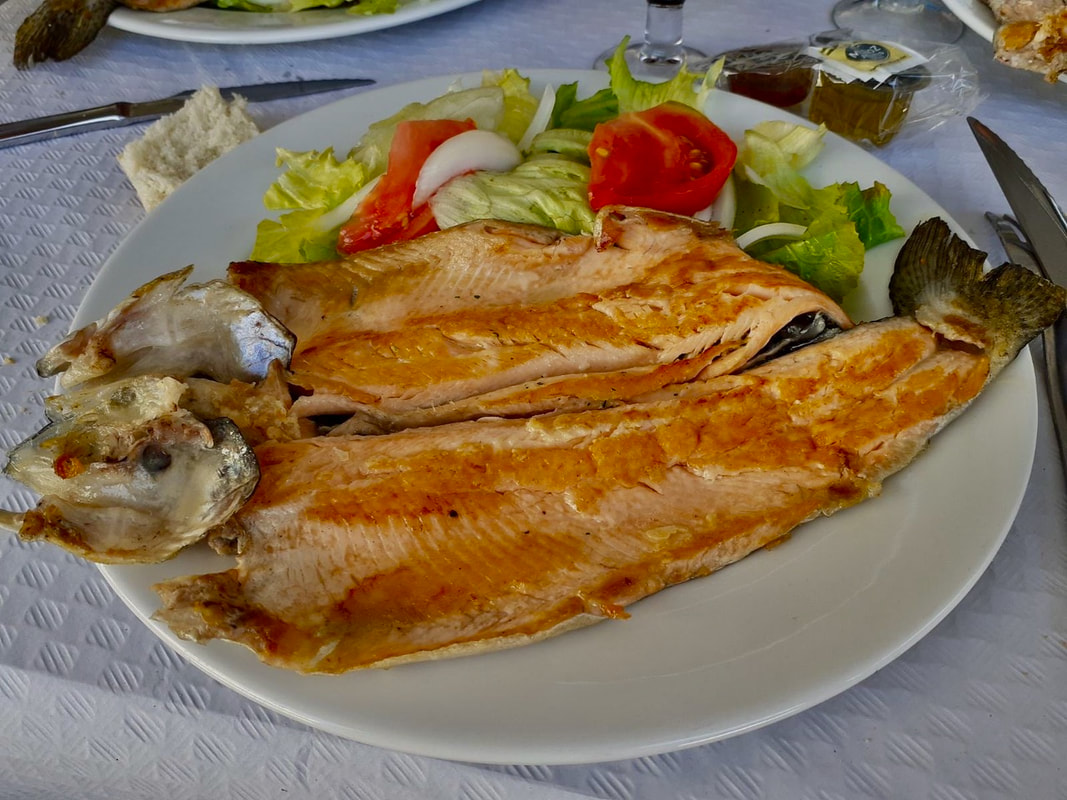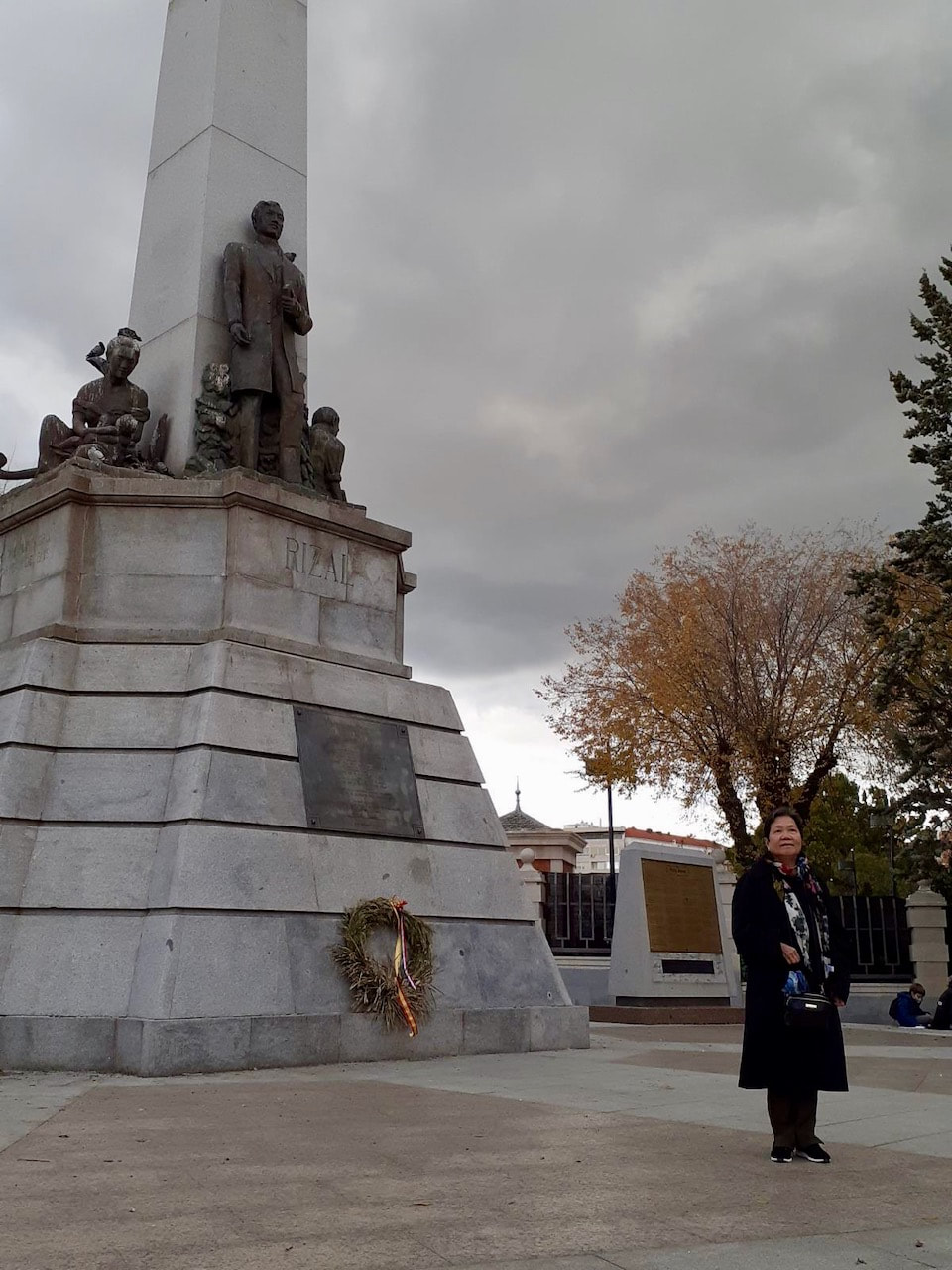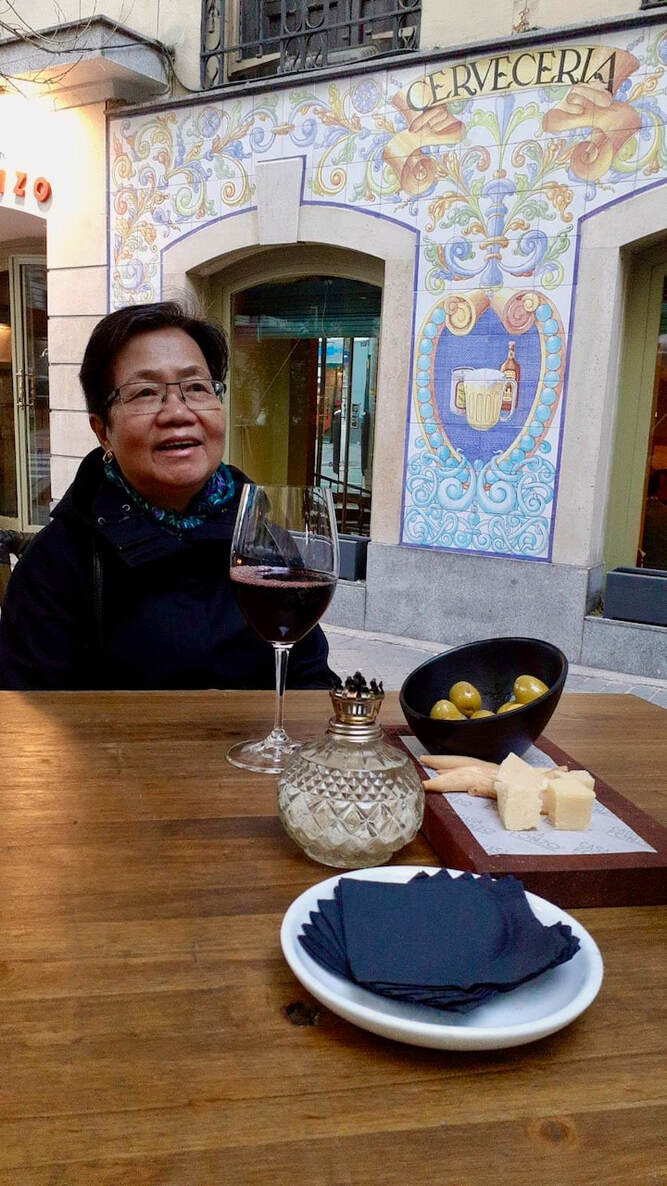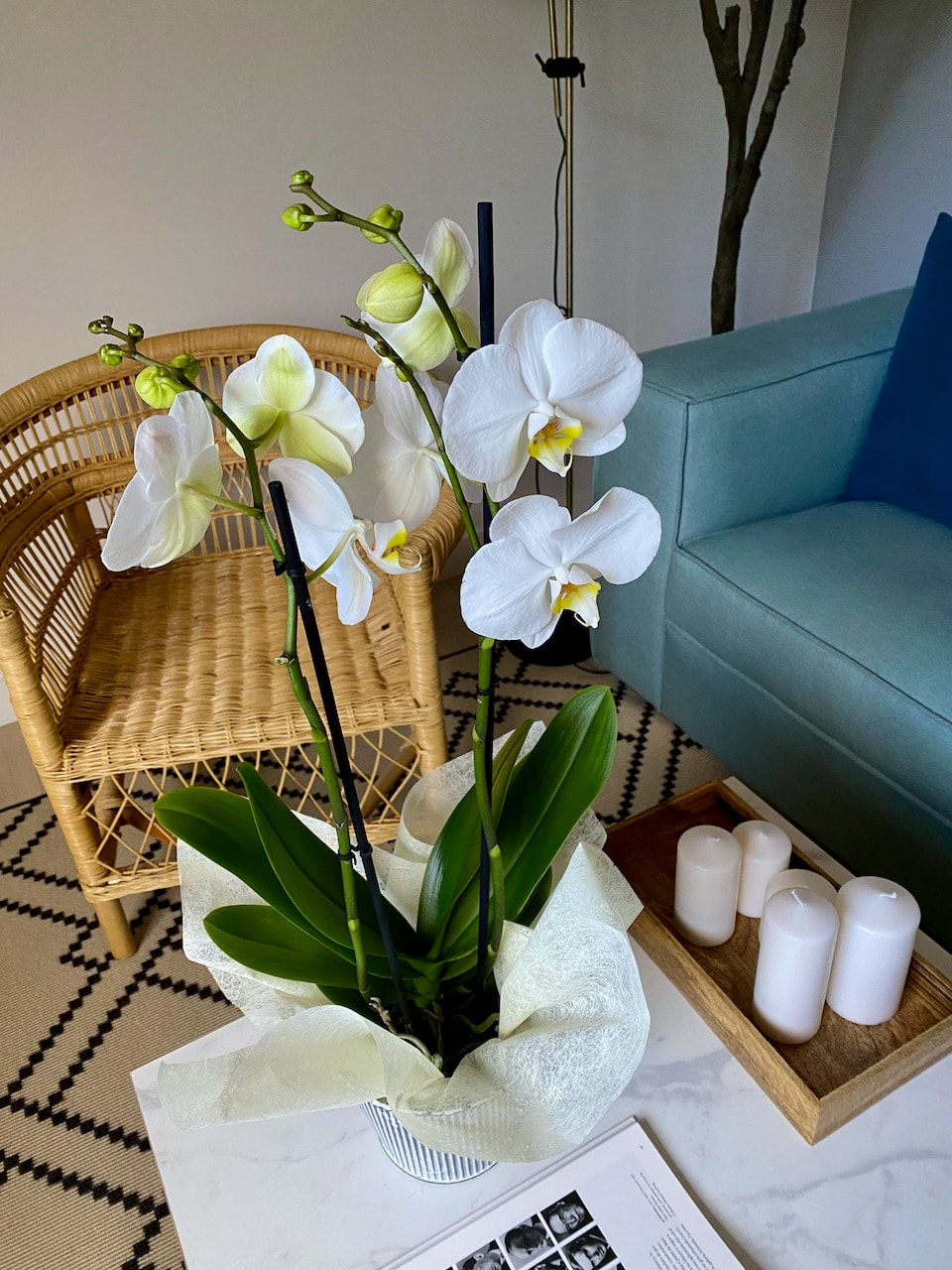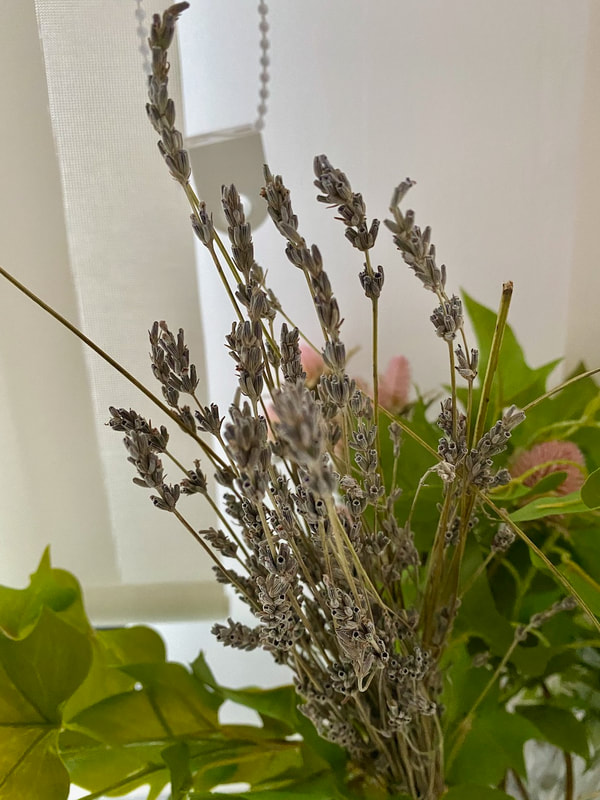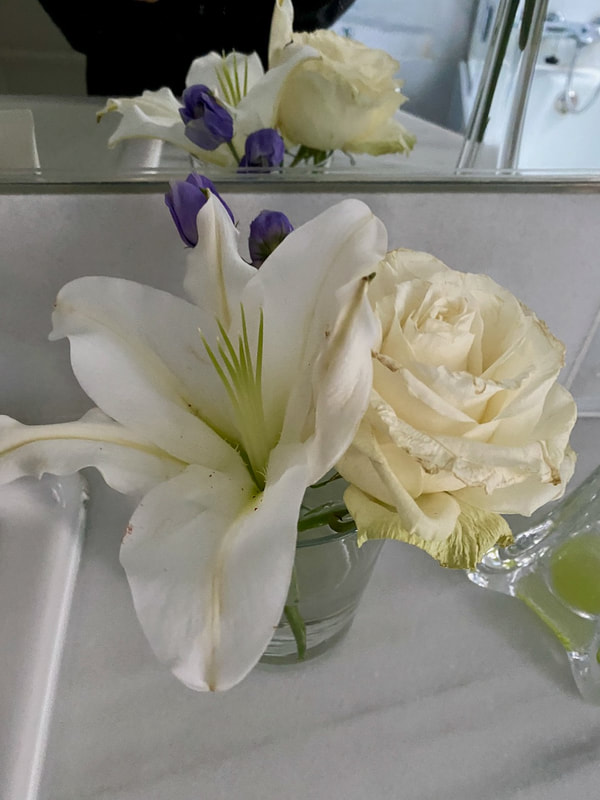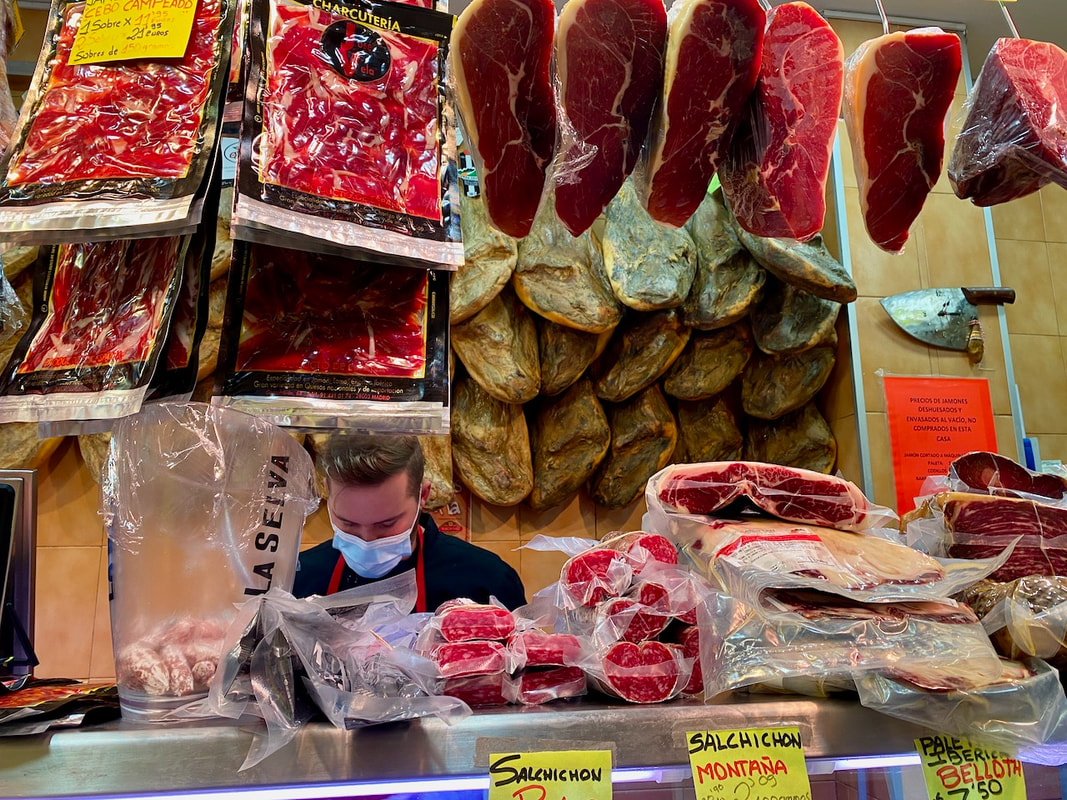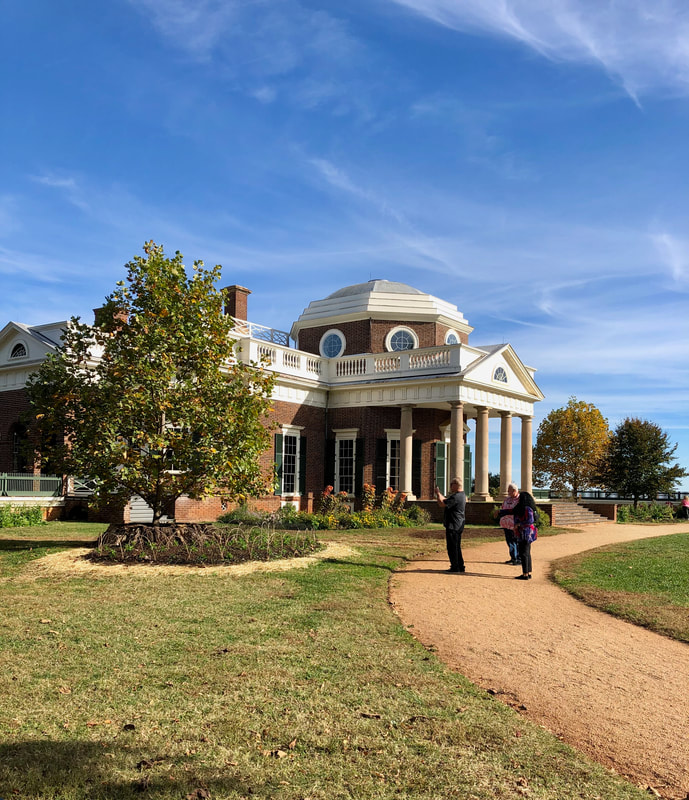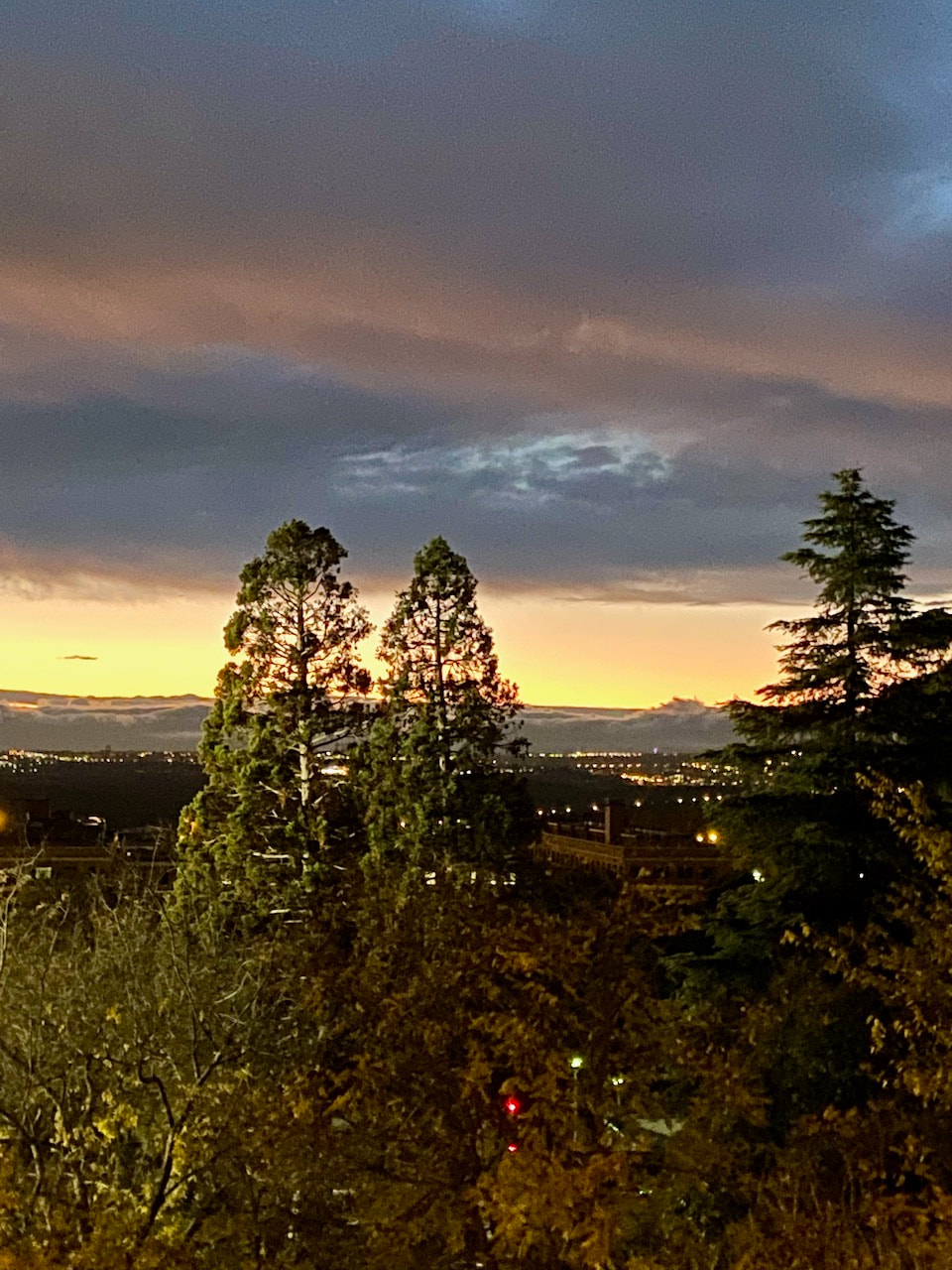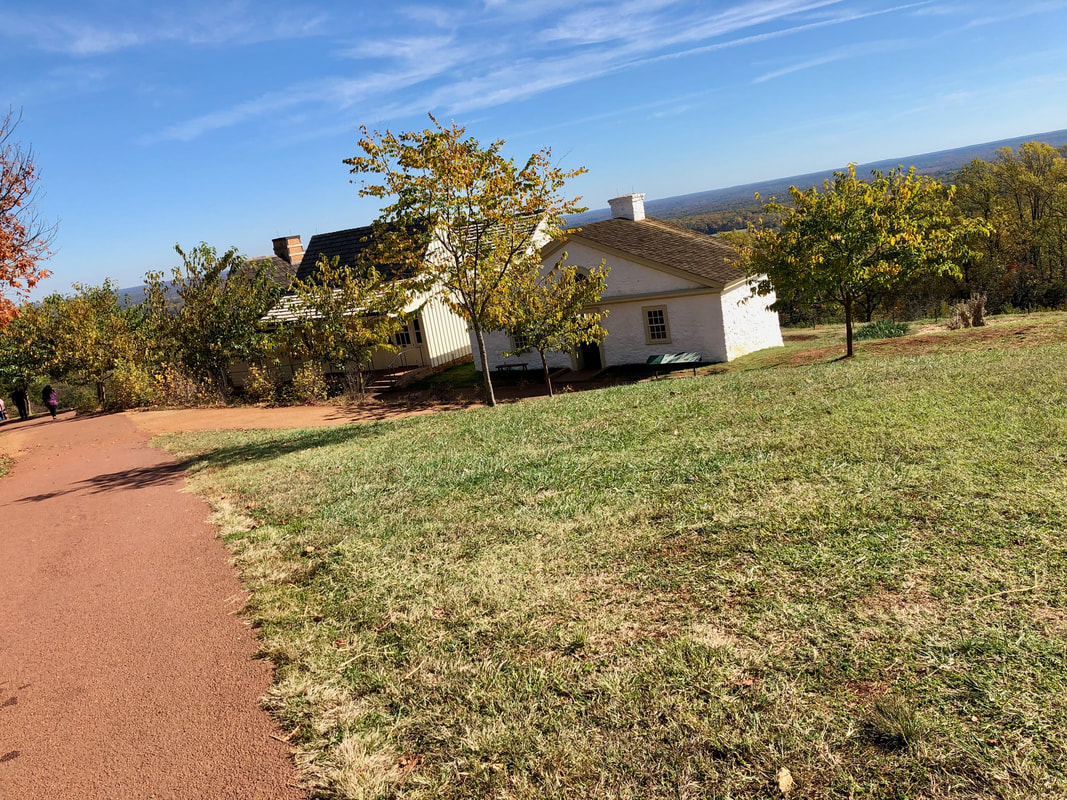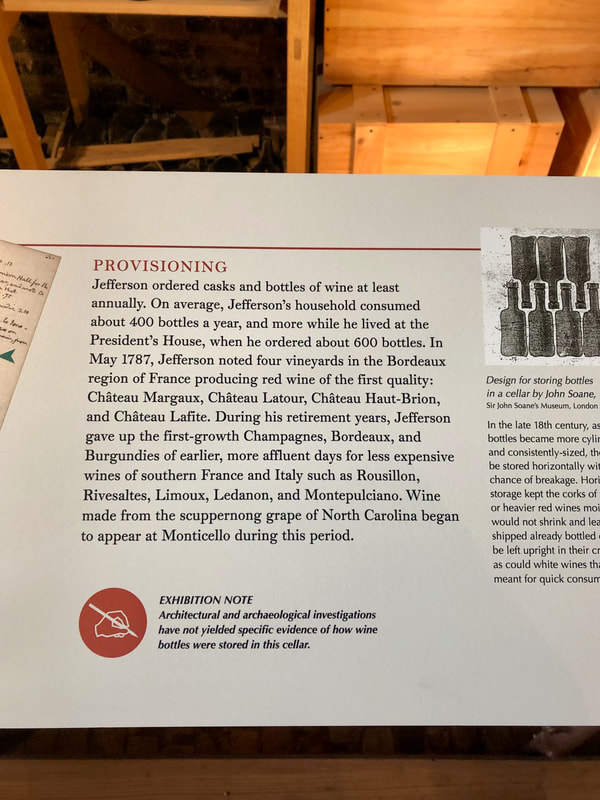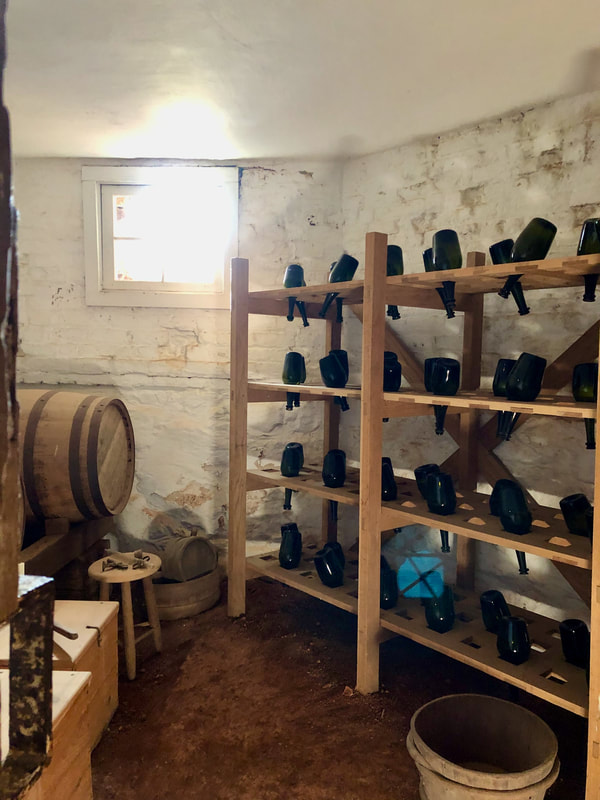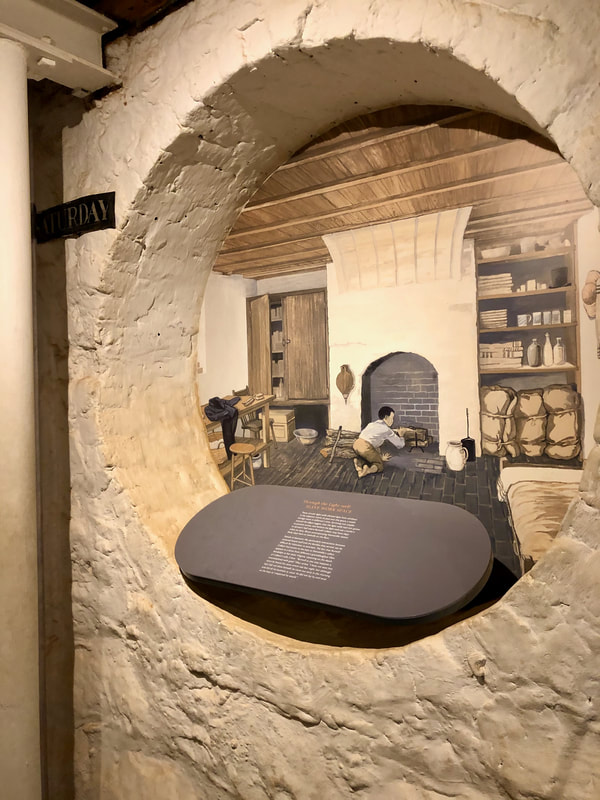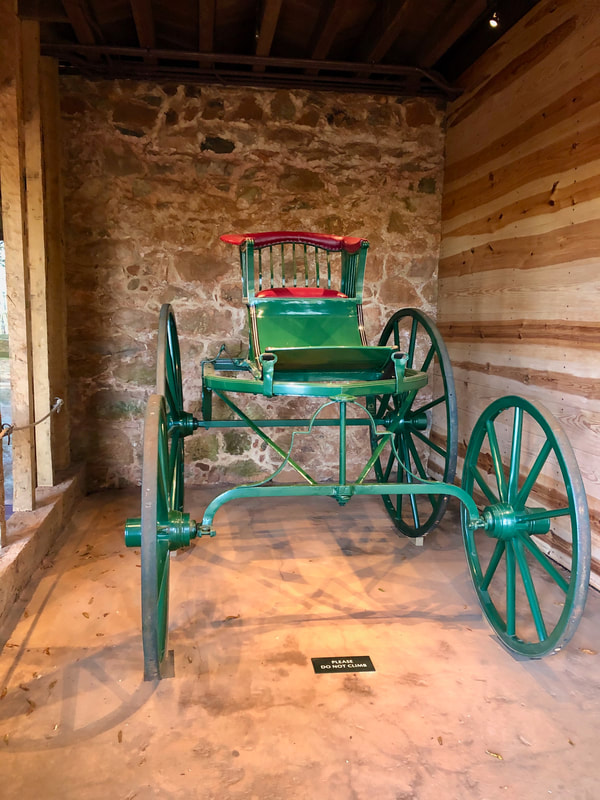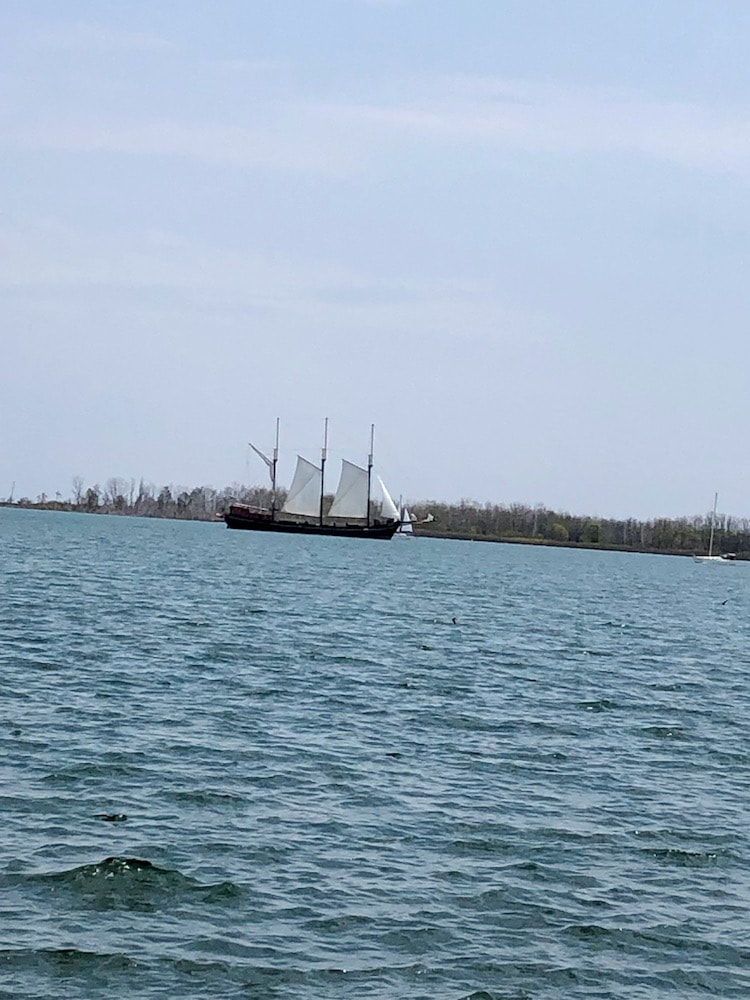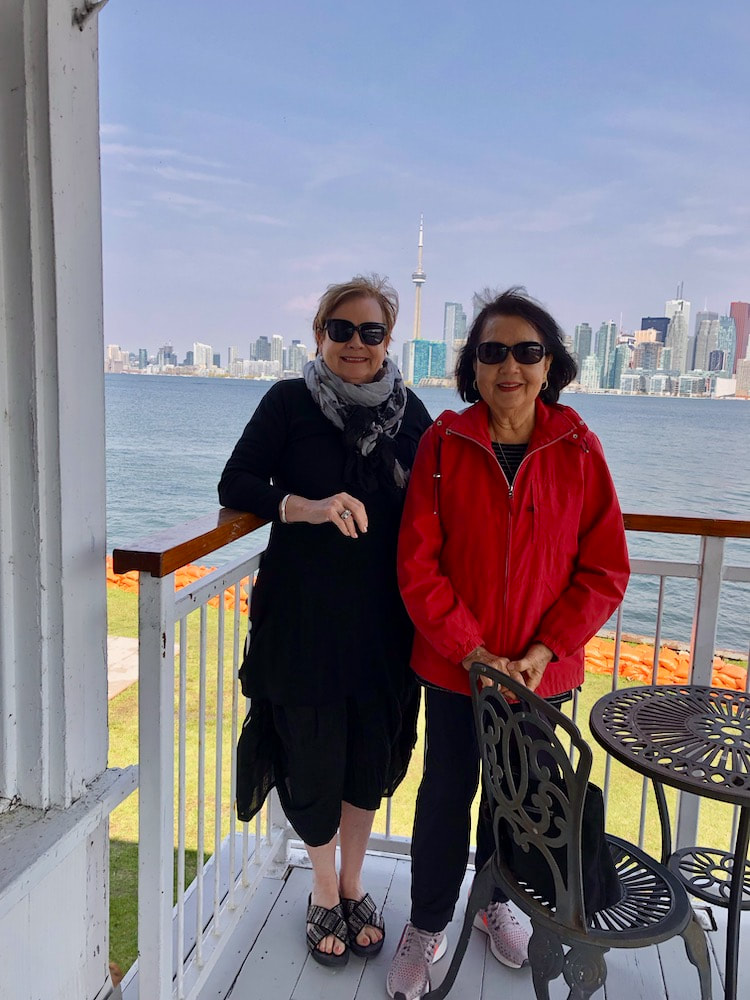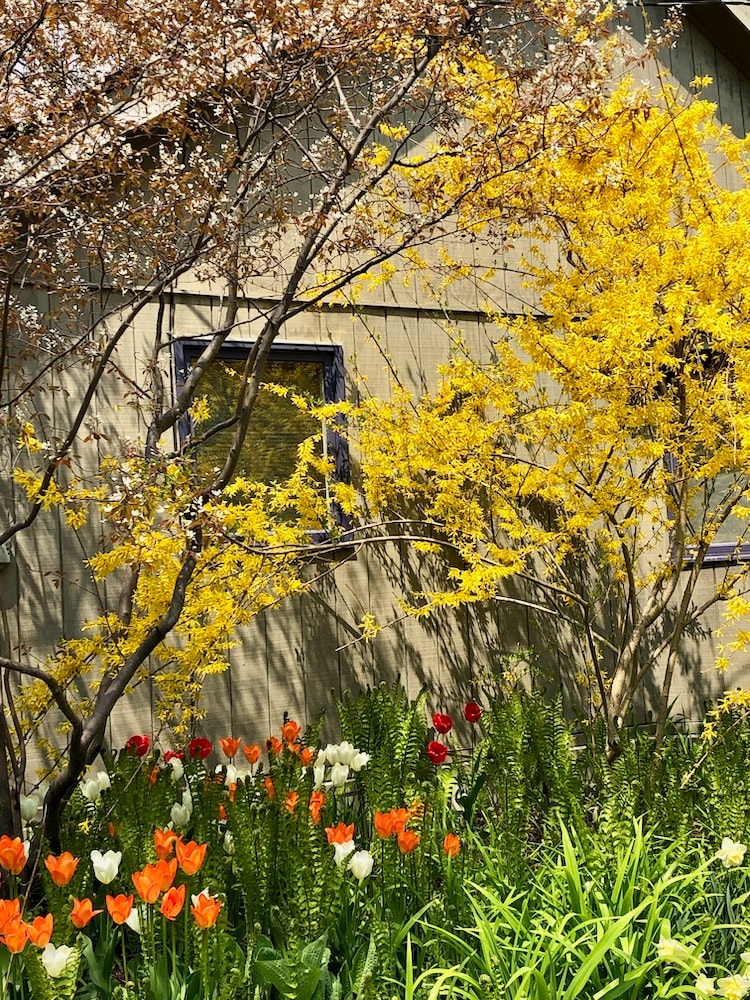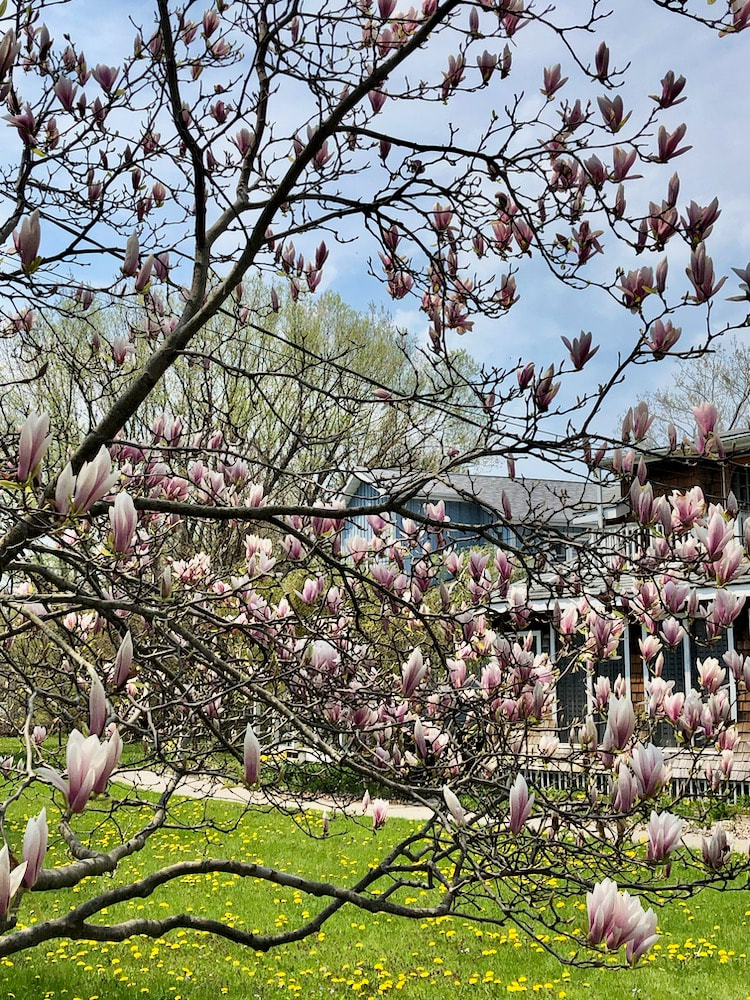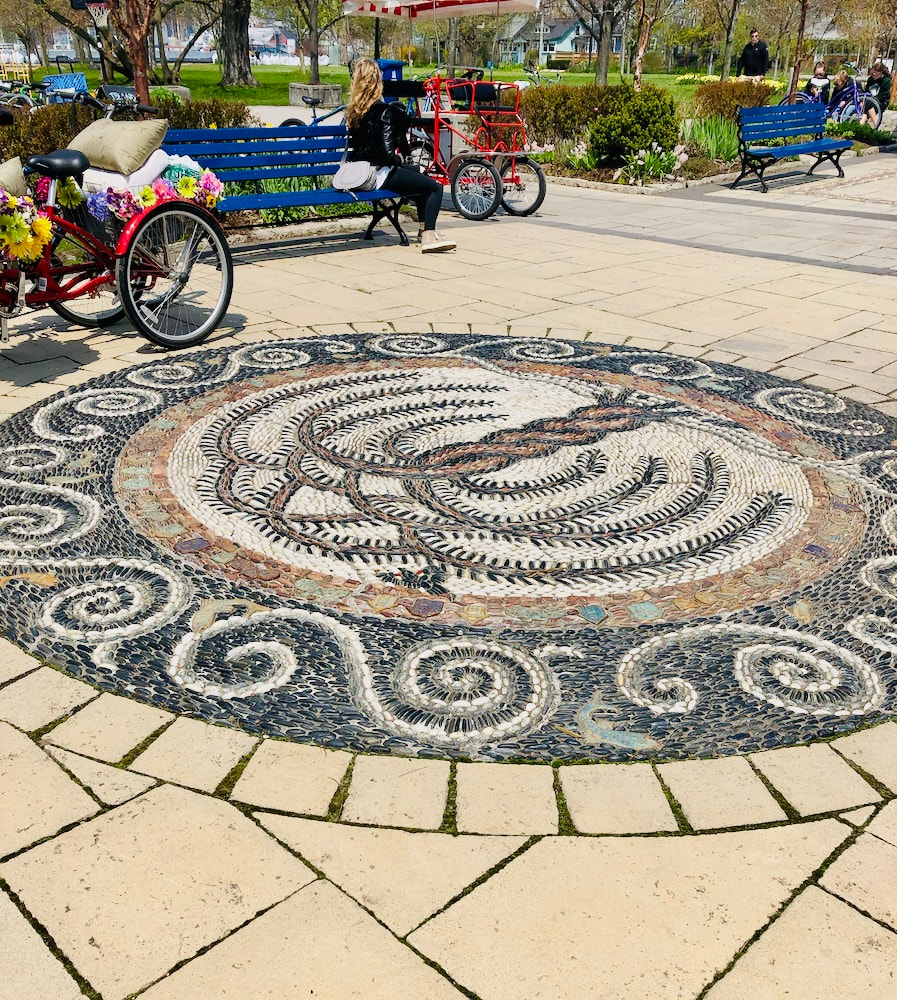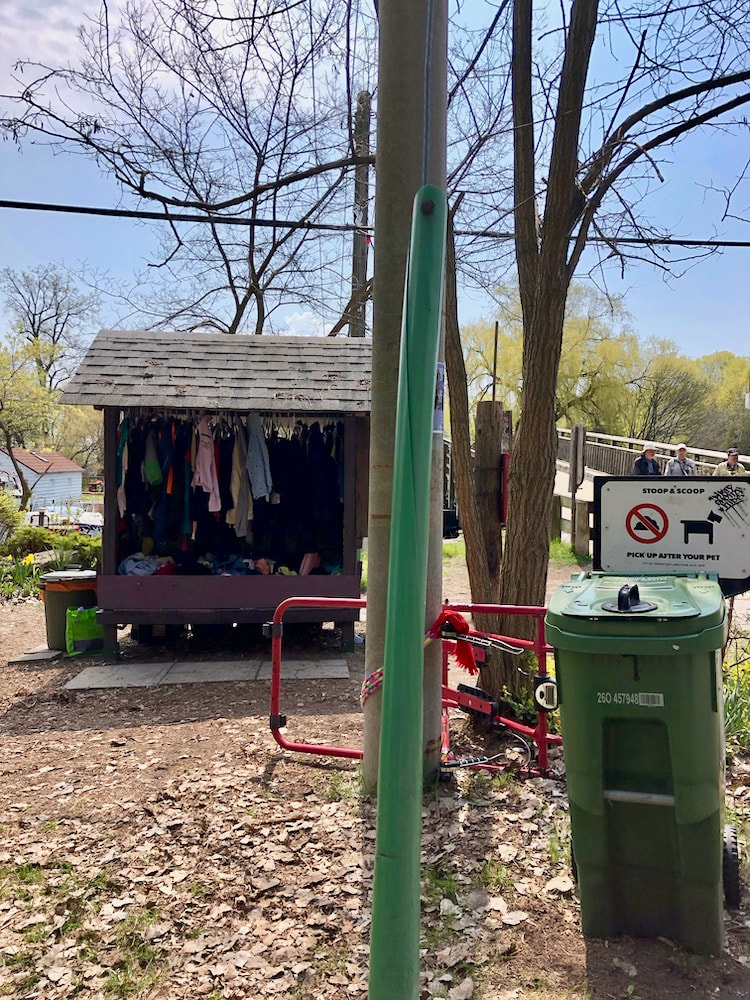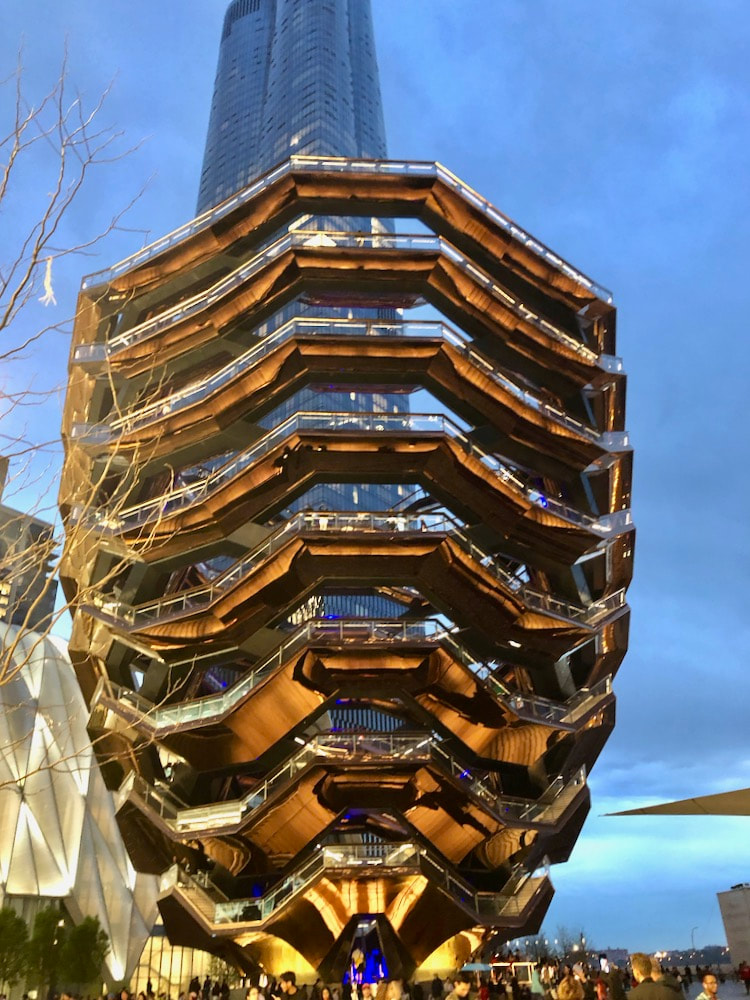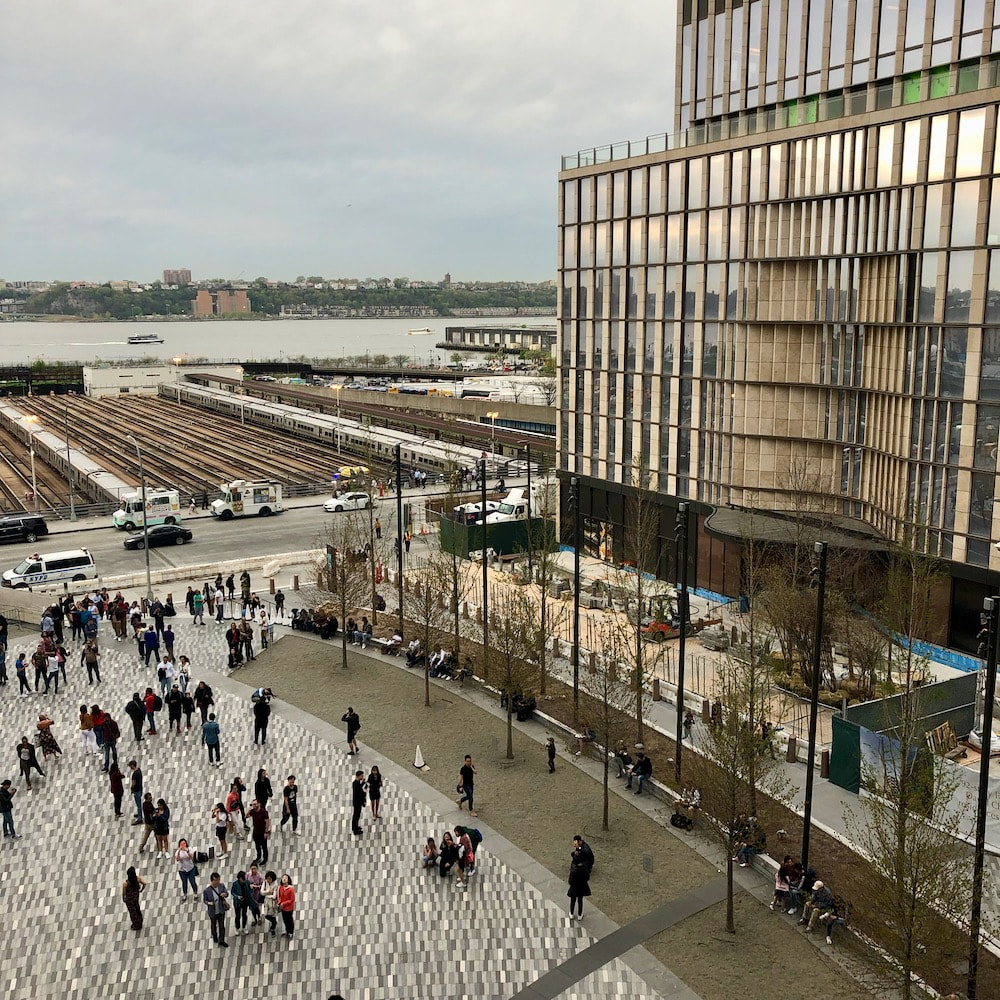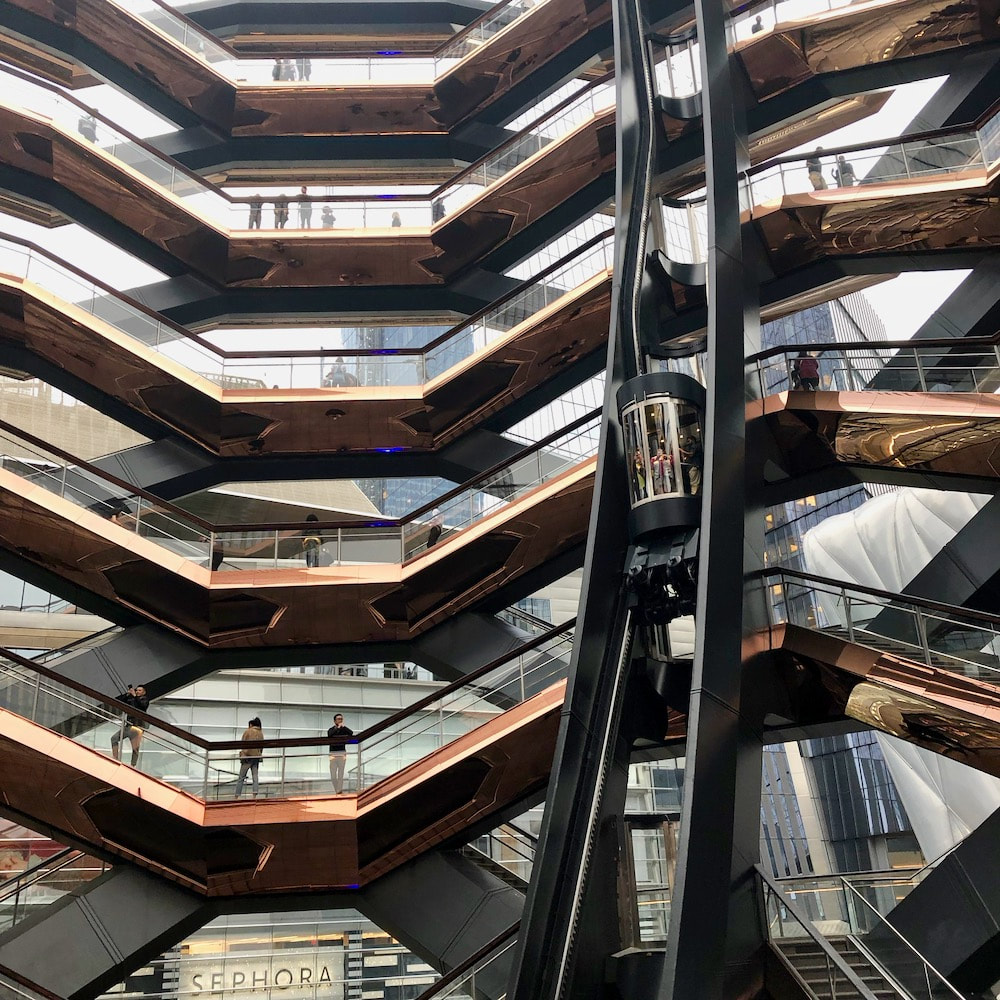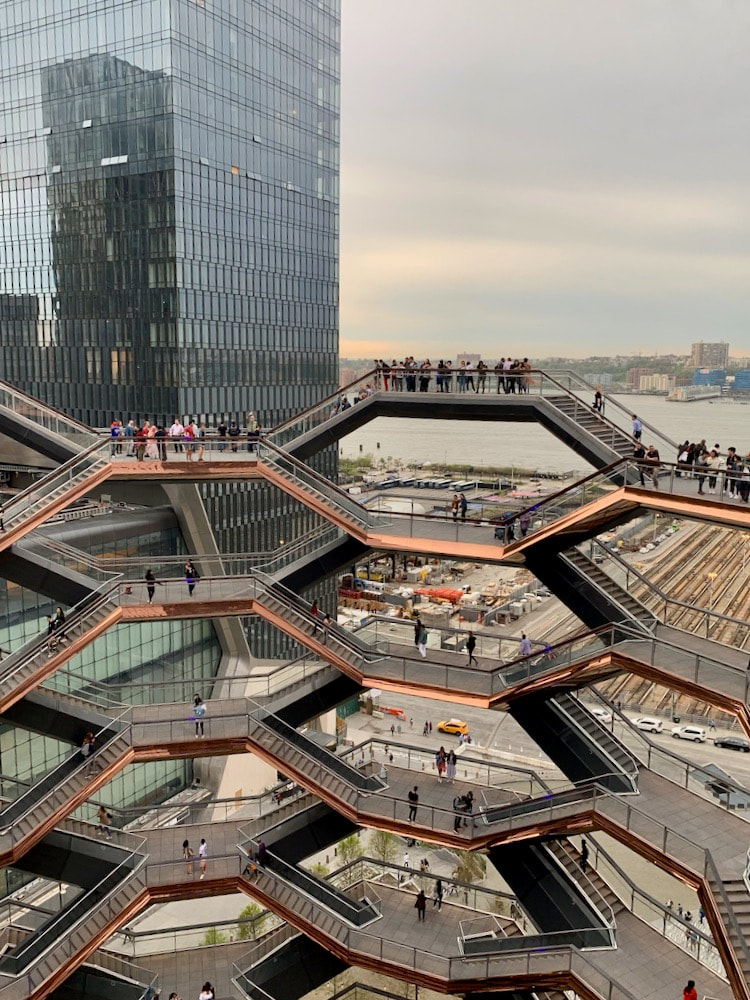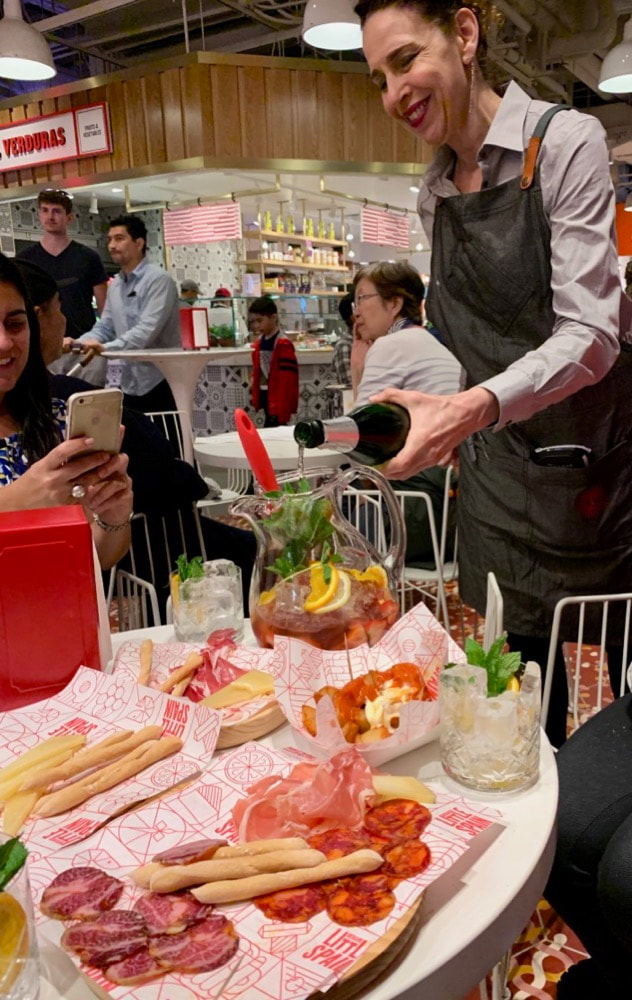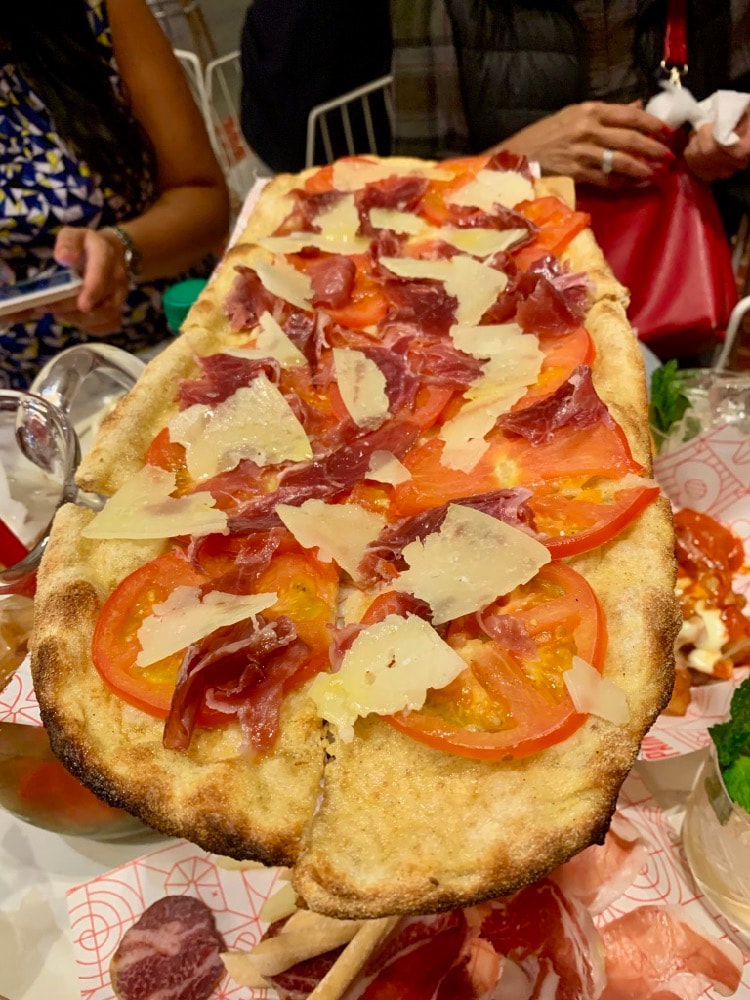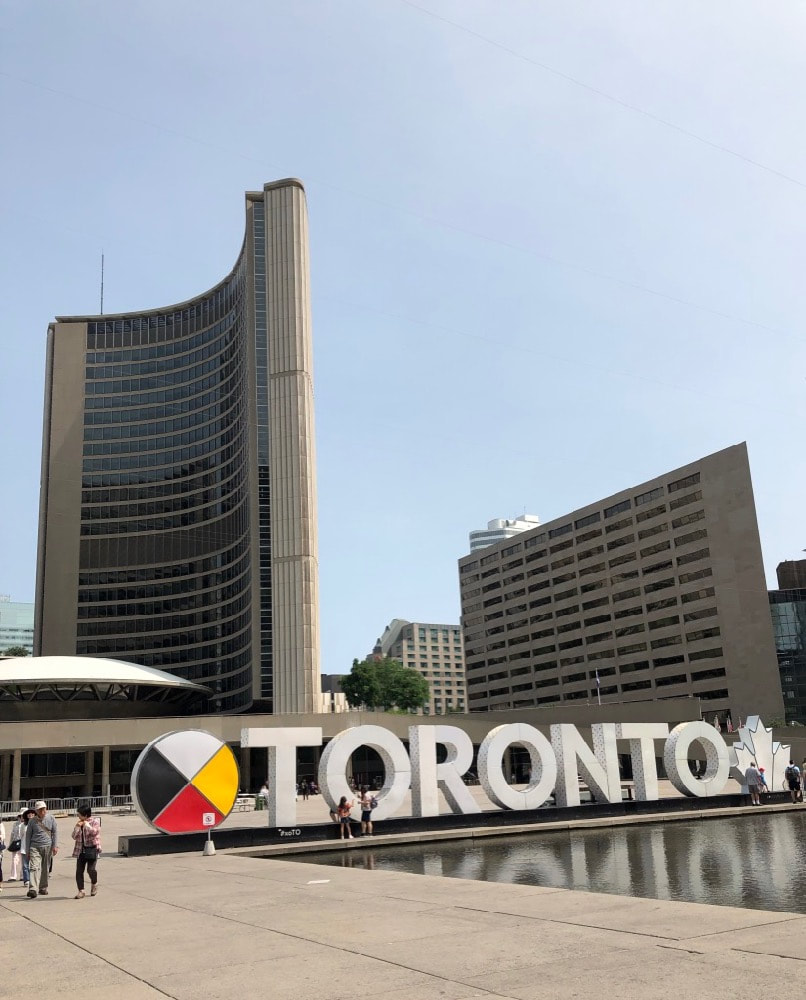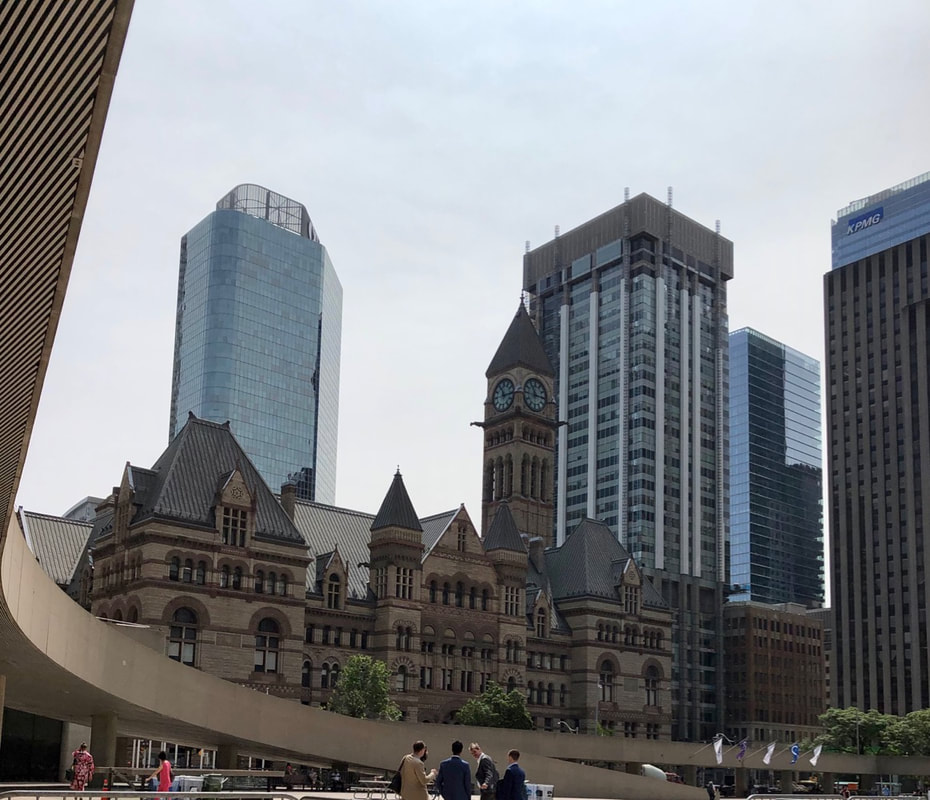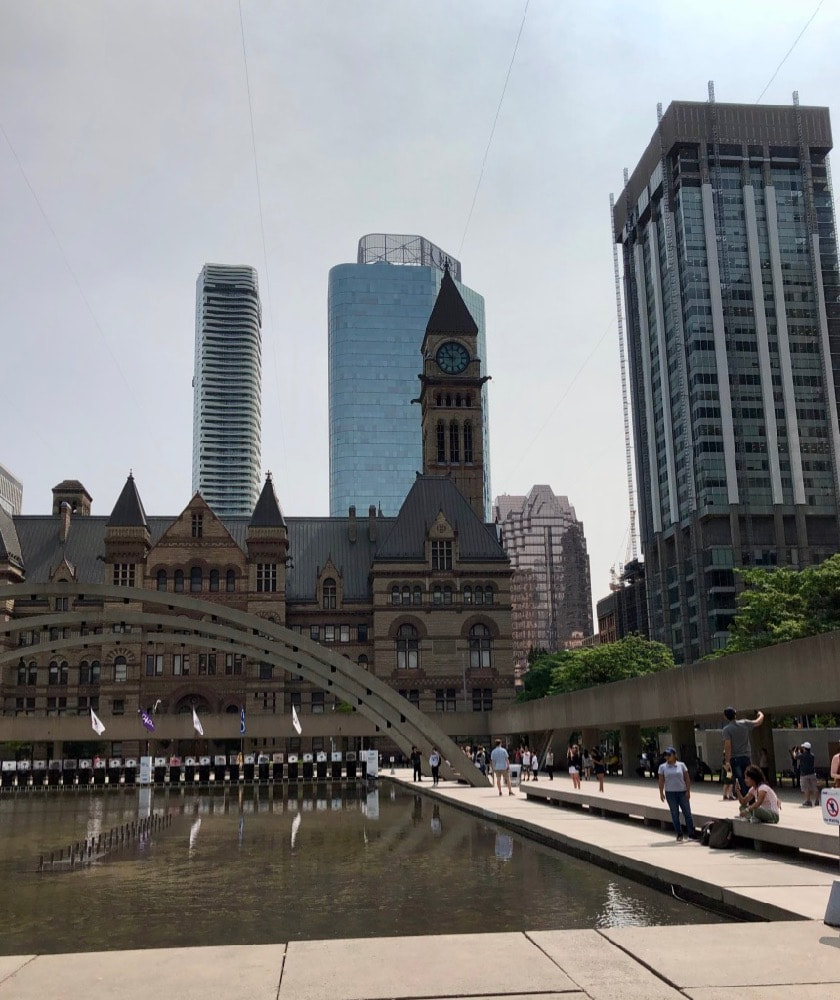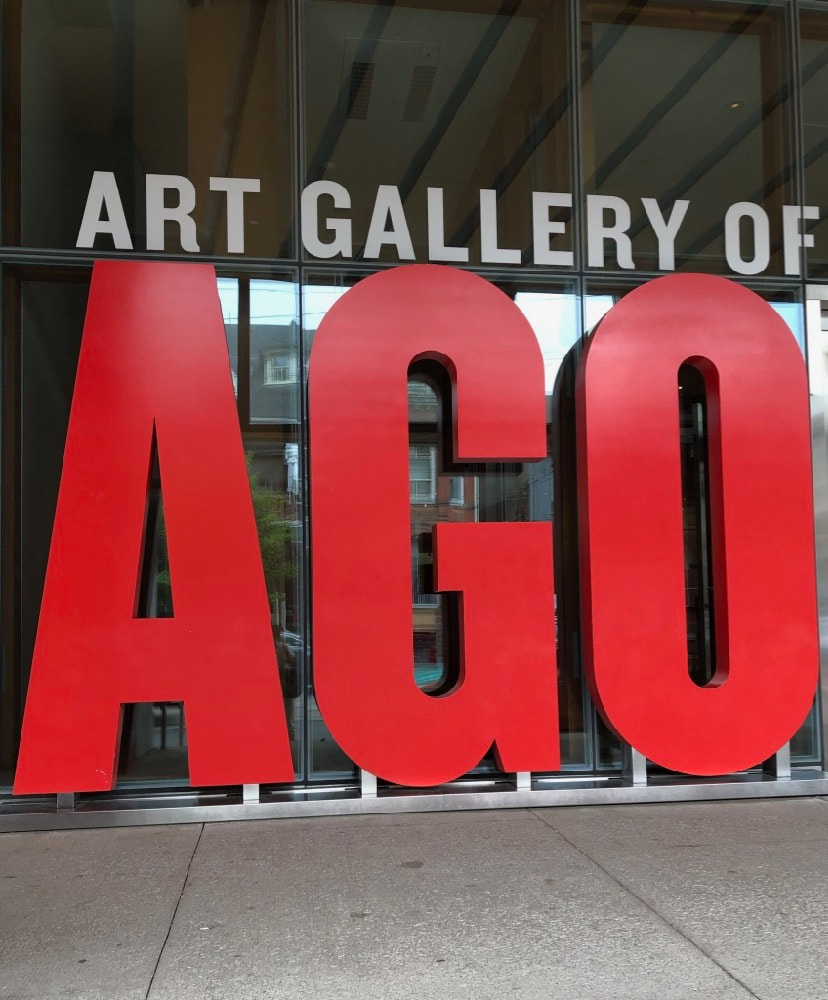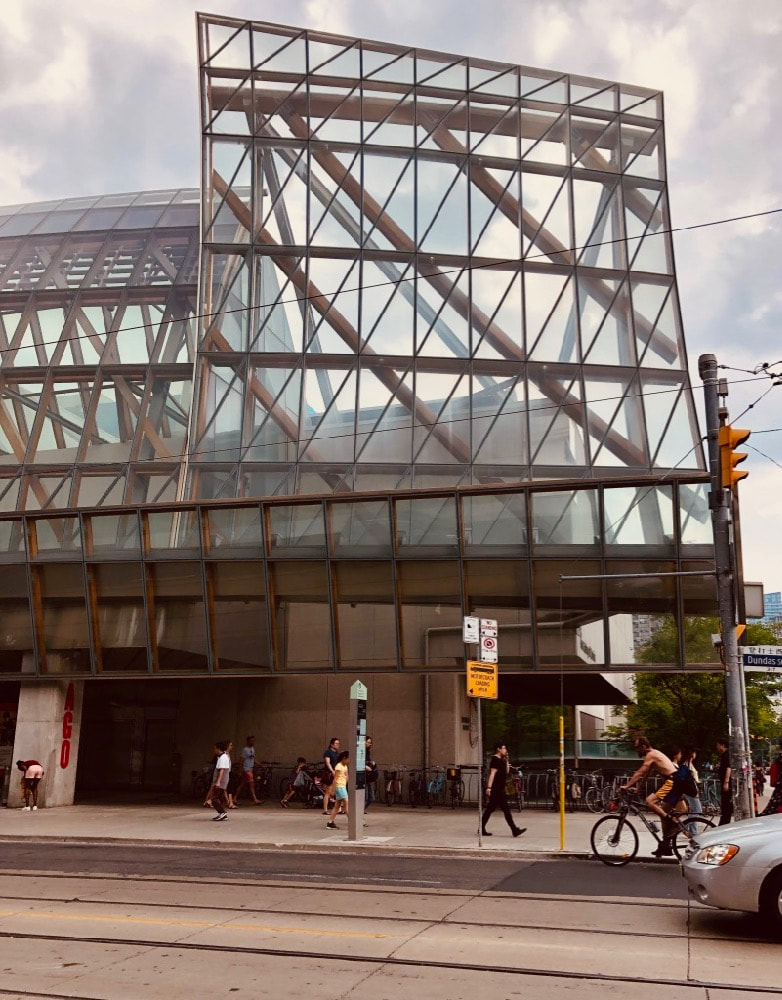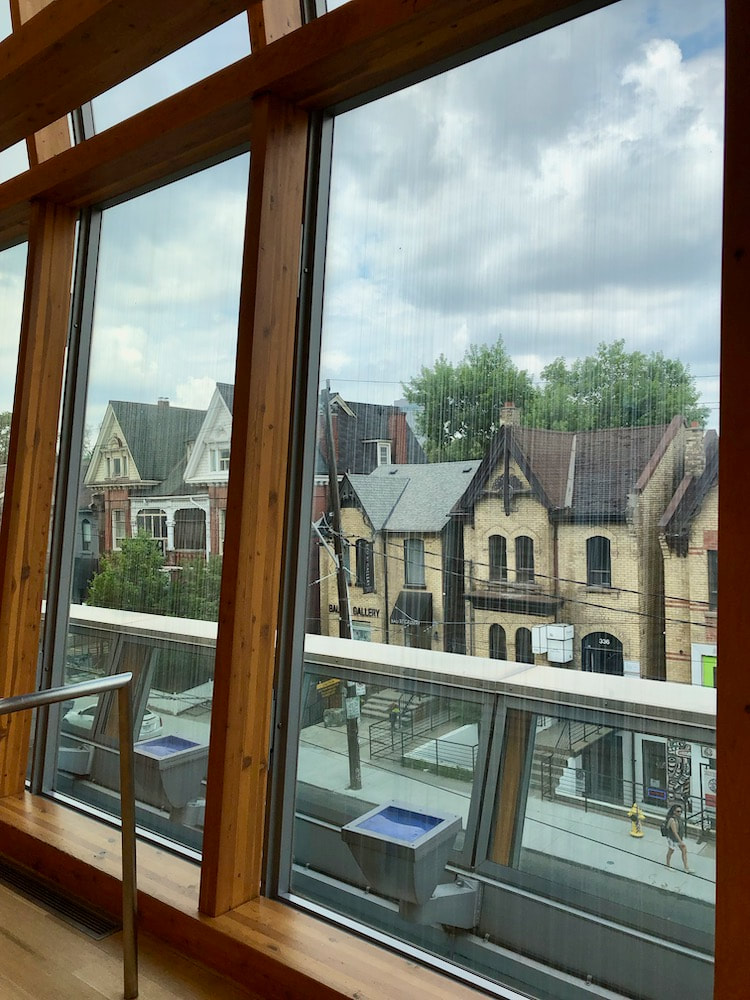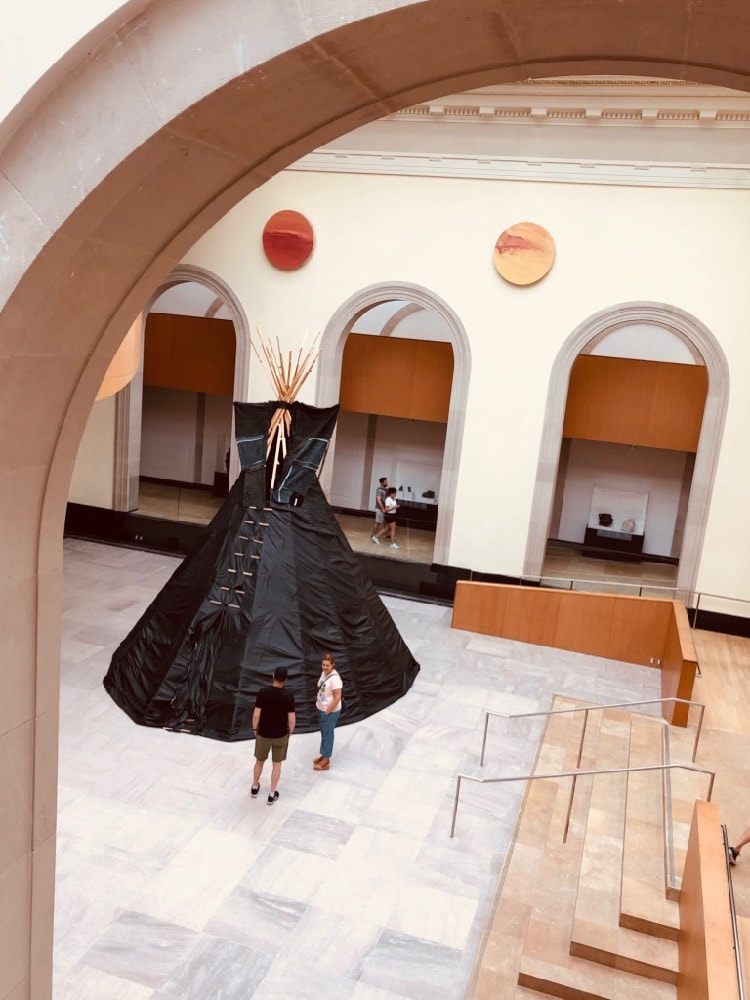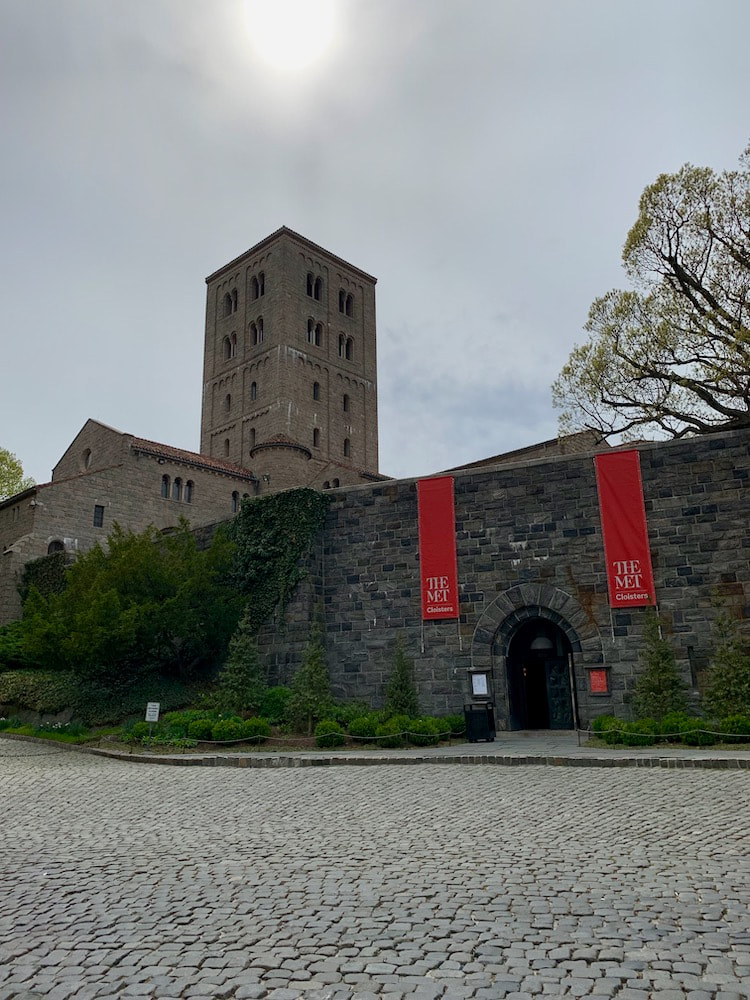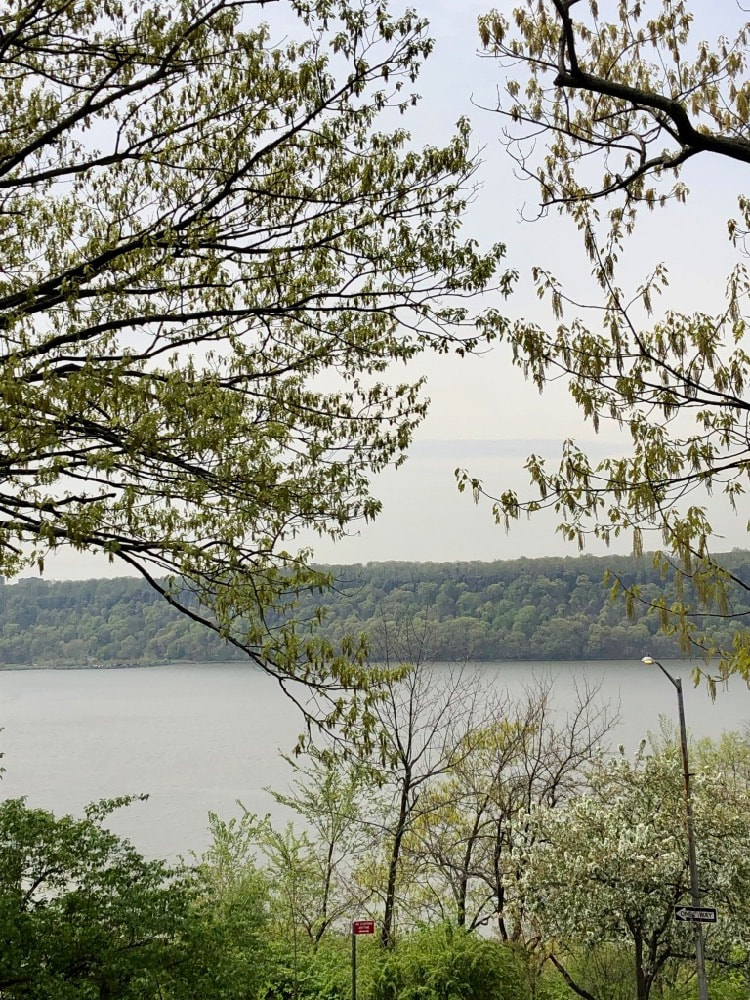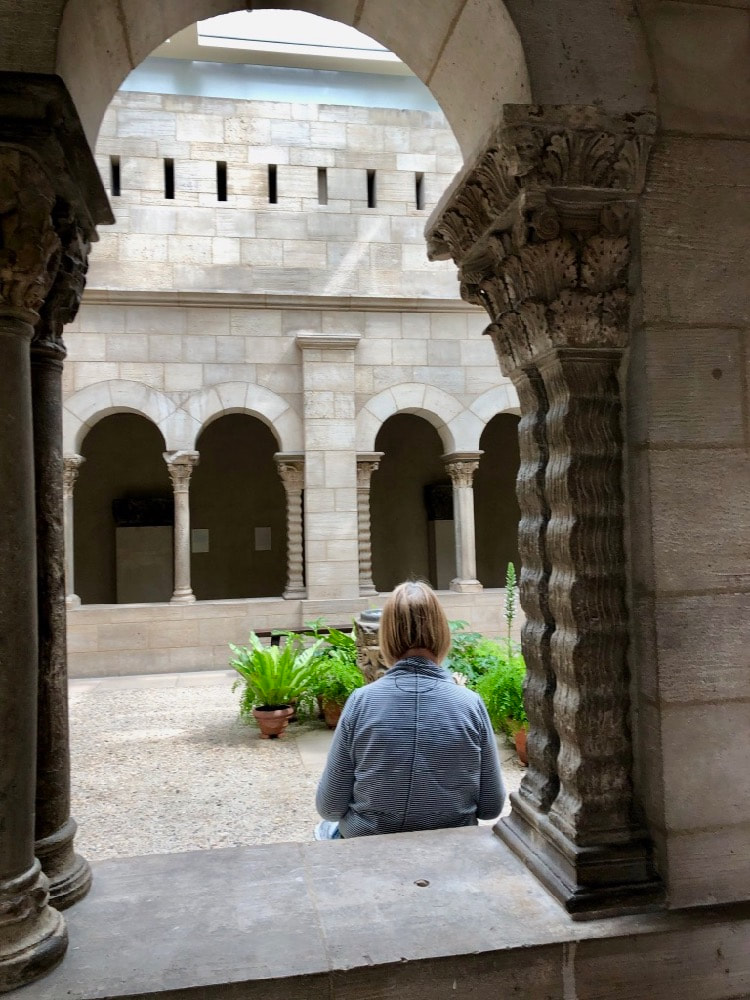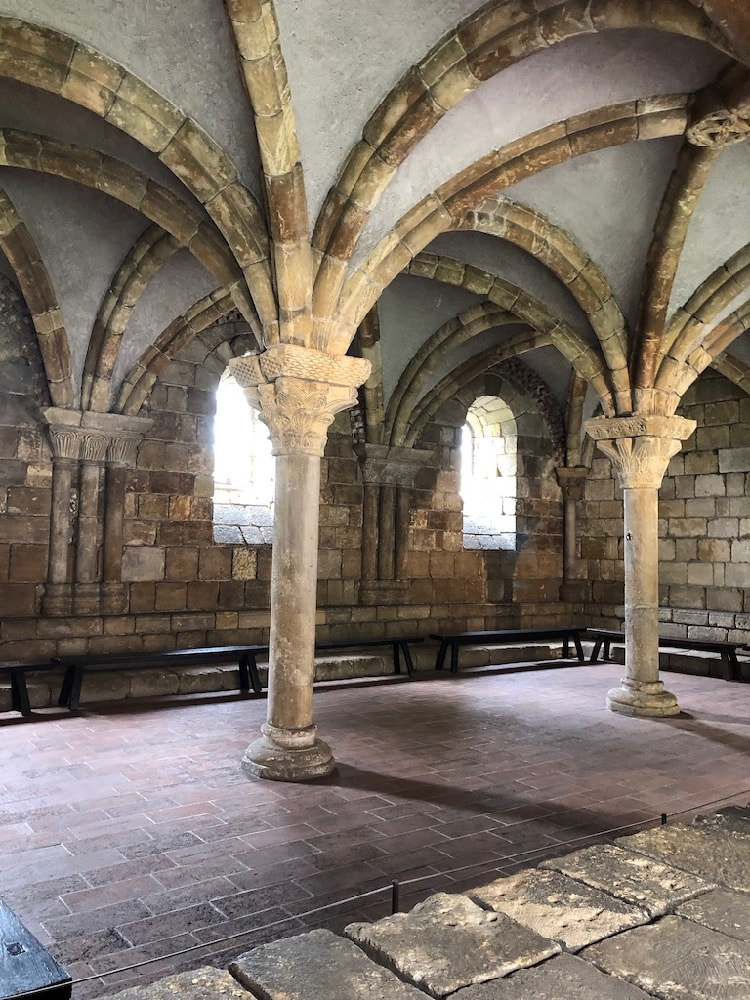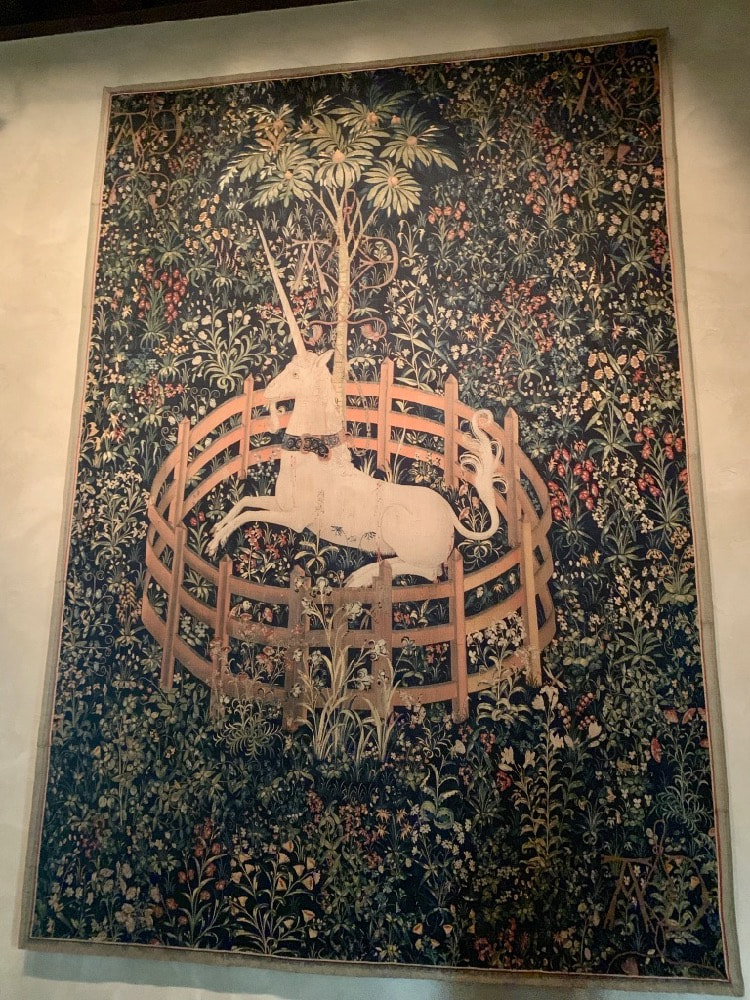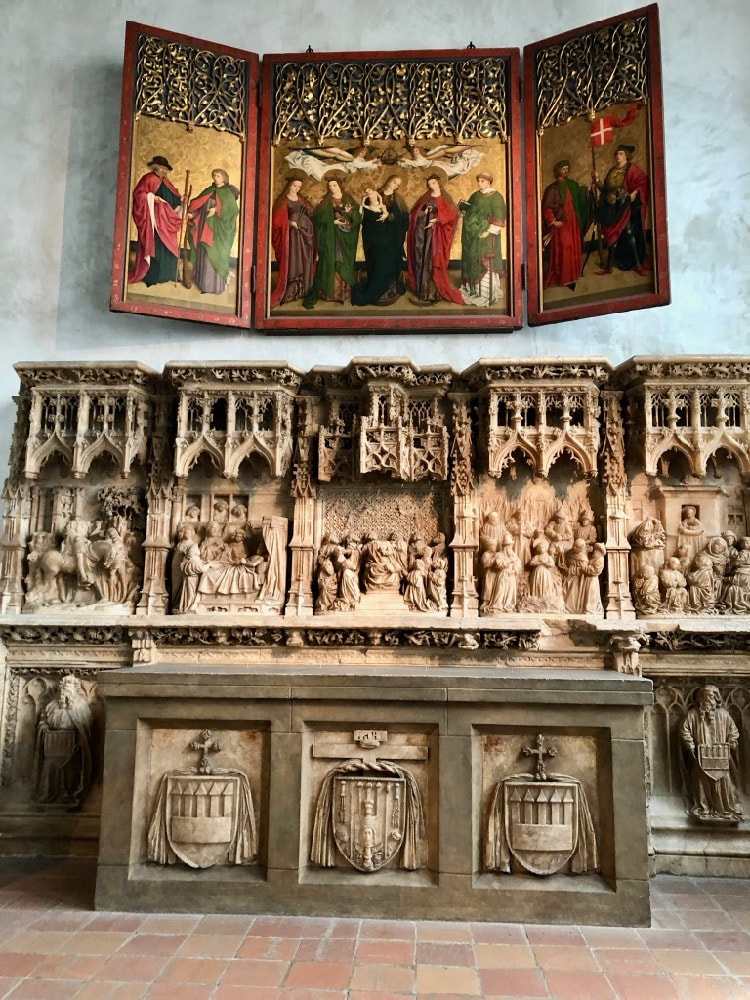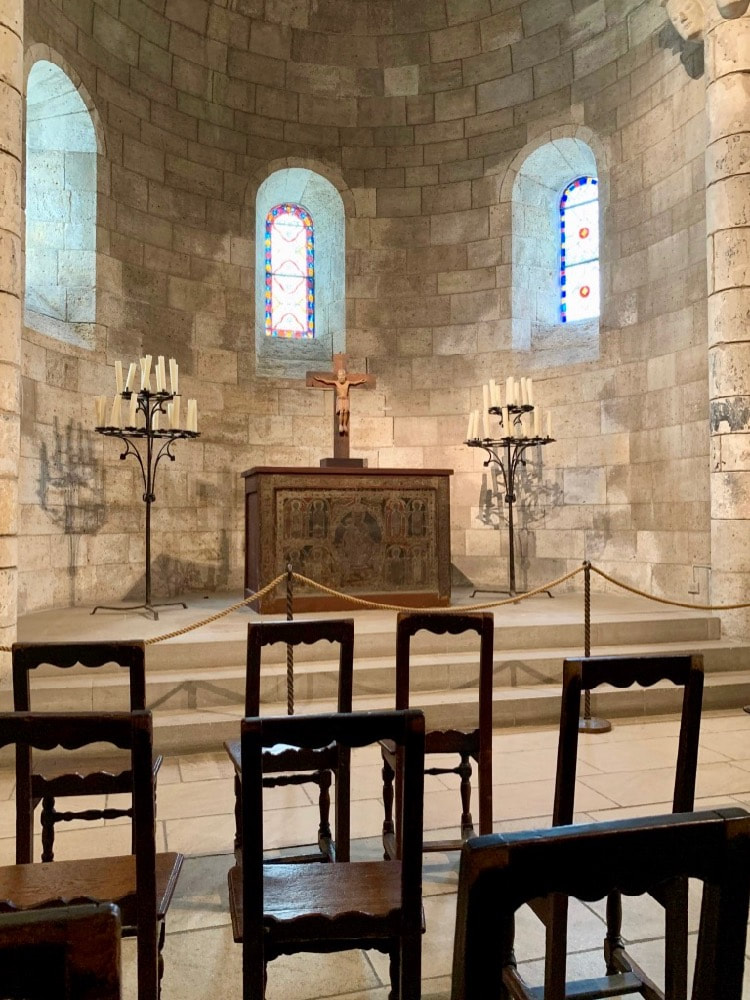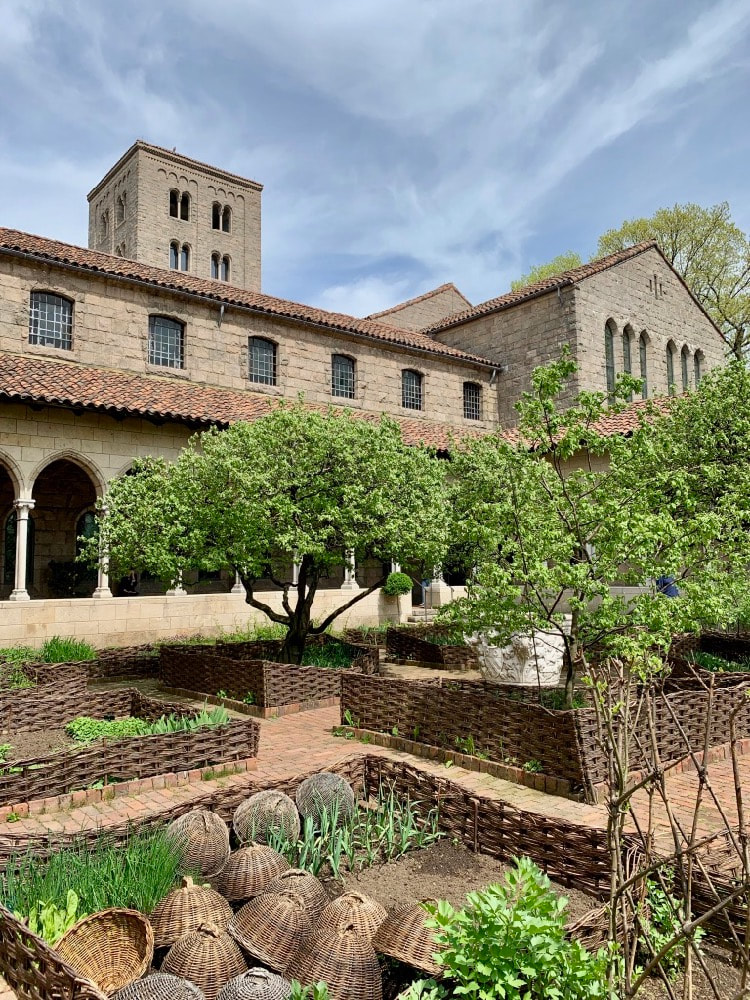|
Local markets attract me to no end. Exploring them gives me plenty of satisfaction. Our favourite is the Friday Market in the town of Santa Barbara, about 20 minutes away from us. I love to go when it is the market day for that town, as many vendors from different provinces and towns in the island of Panay go there to sell their produce. Thus, there are a variety of choices that ensure you buy quality products. Last Friday, we went to a town next to us as it was their market day. It's busy, but this adds immensely to the fun. I went with my sister and niece; we had reasons for being there, so we decided to separate ways and meet at a designated place and time. My sister came with me because I'm unfamiliar with the market.First, we went to the fish section, and as we entered the area, my sister's former student greeted her. He is now a fish vendor. The fish are all fresh. There are many to choose from, including blue marlin. The price is reasonable compared to what we get in our town. My sister and I saw the tiny fish that we used to eat as children. You can eat the whole fish when stewed in a clay pot, in garlic and ginger, and wrapped in banana leaf. It brought memories of the smell when our aunt would cook it. Of course, we got some. The day before, we went to a pottery place and got the perfect cooking pot, so we got very excited. We went next to the meat place. My sisters have a place she constantly goes to; they already know her. Such a place is what we call suki in our local dialect. Suki means someone who buys regularly from the seller. From there, we looked for mung bean sprouts to go with the dish we planned that day. We went around not so much to buy as we grow plenty on the farm but to check the prices and availability of produce. We did our market research. Then, off to the dried fish section. We love eating some, especially for breakfast. Then we traced our way back to where we said we would meet each other and saw some plants for sale. They have beautiful herbs: spearmint and peppermint. Rosemary, basil. And Tarragon. I got some, and my niece did the same. What's funny is I got three and paid 300. I found it cheap, 100 pesos each. On the other hand, my niece bargained for three for only 200. I smiled as I was content with my purchase. Two days before, I bought the same plant for 250 each in the shopping mall. We had so much fun sharing our experiences in the car. The market was busy. It was crowded, hot, loud, wet, and smelly, but who cares? People are friendly, so no shouting in anger, only voices selling their ware. We had so much fun. We shared memories of when we were children. We remembered the adults in the family going to these markets. We looked forward to their coming home as they always brought us treats, but we did not go. We returned to this Santa Barbara market several times as we always had so much fun. Last time, I found someone selling spices, and I told my nieces about it as we always looked for some but could not find some exotic ones. My sister suggested we try going to the markets in other towns. I am so game for it.
Unsurprisingly, Iloilo is UNESCO's first Creative City of Gastronomy because of its delicious native food and fabulous restaurants, some of which are hidden in its villages. These are unique eating places that surprise even the most discriminating of tastes. Nozzled in the town of Sta. Barbara, for example, is Munk's Coffee Shop and Resto, an unpretentious eating place that serves quality food unfamiliar in Iloilo province. It is a small place that has been here for five years. Who says restaurants like this won't survive in the small town of Iloilo? Together with my sister and niece, we arrived at the restaurant for lunch. There are diners at the four tables (yes, that's all it has). Two guests kindly offered us the bigger table after finishing their lunch. It looks like they had some form of curry. We seated ourselves and looked around. We saw that they also sell coffee grounds for drip or press. Not only coffee, but they also have homemade sauces and jams made from local produce. We went to the restaurant to try their focaccia bread. If you want to take out the bread, preorder it the day before. We settled for something that we liked on the menu. The coal hamburger caught my attention, so I ordered it. Both my companions ordered pasta dishes. They have curries, salads, and Danish meatballs, which we will order next time. Peter Munk married Lynette, a lady from this town. After work stints as chefs in Denmark, Japan, Poland, and Bulgaria, they decided to open a restaurant in the town of Sta Barbara Iloilo. Peter has prepared food for Denmark's royal family during their birthdays and anniversaries. The couple chose to locate in the Liz complex in Sta Barbara in 2018. They chose Peter's middle name, Munk, to develop Munk's Coffee Shop and Resto. They aim to wean Ilonggos from their super sweet taste, so their bread uses only a bit of cane sugar, and they don't serve rice dishes here. Their bread is all homemade, and they make most of the products they use, like jams and sauces. If you're in a hurry, you can call them to preorder. Order some takeout and try these at home, but it's no substitute for eating it right there as soon as they finish preparing it.
I look forward to trying their other dishes and products. We only bought the coffee that they sourced from a secret place in Bacolod, located on the neighboring island of Negros Occidental. When Peter and his wife tasted this coffee in 1987, they decided that they would only serve it when they opened their restaurant. This coffee is of the Robusta beans harvested near the mountains of Bacolod. For them, this may be the best coffee in the world. At home, I also use Canlaon Coffee from Negros Occidental, close to the volcano, and this is the only coffee I drink when I am in the Philippines. They may get it from a different place, but I love my coffee every morning. I will have to try out the Bacolod Coffee. Check out Munk's site to preorder your bread: https://munksresto.com Liz Complex, Bangga Dama, Santa Barbara, 5002, Iloilo Tel.: (033) 335 362 A day trip to Dafalongs in San Dionisio is exhilarating, especially for plant lovers. The first time I visited this place, I was with my three sisters, who are all Seniors. The second time, I was with my former classmates, all in our 70s, and a younger niece of one of us, who was our driver. Thankfully, she loves plants, so she enjoyed the visit immensely. On both occasions, we left early so as not to encounter the intense sun at midday. The first time we went, we left at 4 am to have breakfast at the Dafalongs' restaurant. It's open, and you look out into the green rice fields, a relaxing view as you enjoy your meal. You might wonder about this destination's name. The name came from the flat noses of the owners. In the native language, Ilonggo, nose means "ilong," and flat referring to noses is "dapa," so the owners have "dapa ilongs", flat noses. That's where the name Dafalongs came from. San Dionisio is 110 km north of the city of Iloilo. It takes about 2 hours and 25 minutes to reach the place. We went straight to Dafalongs, but coming back, we passed by Sara and Barotac Nuevo, two towns we identified as enjoyable for that day trip. There are other towns on the way that are also worth visiting, but we focused on these two. Dafalongs is on the national highway in Barangay Bagacay in San Dionisio, so it is easy to find. If you doubt you're on the right way, you can always ask people on the streets. The roads were good, so the trip was far from exhausting. We arrived at Dafalongs and immediately sat at the restaurant, ready for a midday meal. Some dishes stood out on the menu because of the local spices they used, which families no longer use regularly. For me, it brought me back to the taste of my childhood. Dafalongs open at 7 am, so you can come early and enjoy its various breakfast offerings. But Dafalongs' primary attraction is not its restaurant; though the food is delicious, it has a magnificently landscaped garden. With many priceless plants arranged to make visitors stroll in a park, Dafalongs engaged us no end as we looked at the rare collection. There are ponds with flowering lotus in various colors. There are new additions to Dafalongs, something whimsical and symbols of Christmas. There's a giant Christmas tree close to the entrance. Santa is also right in the midst of the garden. In addition, there is a whimsical, fun sculpture that will make you smile. You can look at the images below. Mary Ann Cogollo, a former teacher, started this project. She loves plants, which started as a child when she helped her mother with her orchid collection. She stopped teaching and concentrated on gardening, resulting in a vast array of rare plants in Dafalongs and a landscaping business. Today, she helps many, especially women, mostly the farmers' wives who till her family's rice and sugar cane farms.
On our way home, we passed by Ina Farm, a Kubota training center/resort in Barotac Nuevo that Mary Ann had landscaped. In this town, we also enjoyed bowls of oysters selling for just 60 pesos a bowl or U$1.20. We also passed by another town, Sara, where we purchased cheese rolls and ensaymadas at Think About Cakes Bakery. It is worth the stop. A trip to Dafalongs is very engaging. Good food, relaxing scenery, and a spectacular collection of rare plants make for a satisfying wander. Amoma means in Hiligaynon, the Iloilo language, hospitality, special caring for guests which include giving them food, accommodation and care. This restaurant has become a recent favourite for those who love to eat out. The setting invites guests to commune with nature as the sound of dripping water from the pond offers a zen-like experience. The ambiance alone invites me to go there. The food is not a significant draw, as I can get more tasty versions in other restaurants, but the juices are made creatively from healthy produce from the garden, and this alone draws me and my family and friends. As you go in, it's like coming to a farm. As you enter, you can pick a ripe banana from hanging bunches, a unique welcome this restaurant offers. We love sitting outside and enjoying the breeze. The tables come from old fallen trees, and you can see the tree's growth marks clearly. It's like sitting in your garden, listening to the water flow and watching the varied colored Kois enjoy themselves. We had the blue ternate, cucumber, and ginger juices for lunch. With the juices, we ordered Binakol, a chicken dish cooked with the flesh of the young coconut, grilled lapu-lapu, shrimp ceviche, and rice. They cooked the shrimp heads and served these, too. To start, we had the sweet potato Nachos. I like the purple sweet potato but I hesitated to eat mayonnaise in a hot climate. Still, I enjoyed it and my stomach did not react. There's ample parking in front of the restaurant, and the service is fast and excellent. The servers are pleasant. Dining in Amoma is an outstanding experience. Try it.
Once, I had a friend, a traveler named Tim. Tim had a big problem. No, it wasn't dragons, evil stepmothers, or even losing his luggage (although that was always a bummer). Tim's problem was that he wanted to see the world, but he also wanted to save the planet. Sounds easy. No, it wasn't. You see, Tim was on a quest for eco-friendly travel options. He wasn't your average eco-warrior, though. He didn't carry around a "Save the Whales" banner or hug trees while serenading them with folk songs. Tim was more of a "Save the Planet, But Make It Fun" guy. So, picture this: Tim, armed with a reusable water bottle and a backpack full of socks that had seen better days, embarked on his adventure. His first stop? The land of public transportation, where buses, trams, and trains reigned supreme. But Tim quickly realized that navigating the labyrinth of schedules and ticket machines was like deciphering alien hieroglyphs. The resulting misadventures and missed connections became the stuff of eco-comedic legends. Undeterred, Tim hopped onto the next chapter of his journey: cycling. He was confident that he could be an eco-hero on two wheels. Yet, he soon discovered that mastering the art of pedalling without looking like Bambi on ice had its share of comedy. His wobbly exploits on a bicycle had audiences in tears – from laughter. Walking came next, but it wasn't a walk in the park. Tim embarked on a quest to find the world's most eco-friendly shoes. He was in Bangkok then, so he bought locally produced shoes. Proud of his local purchase, Tim plodded the streets but soon felt that his socks were getting wet because it was raining. When he lifted his shoes, the soles were gone. Carpooling turned out to be the plot twist Tim needed. On his trip from Bangkok to Phuket, he met an eclectic group of fellow eco-travelers with stories that could shame the wildest road-trip movies. Tim's carpooling escapades were nothing short of side-splitting, from karaoke duets to epic snack battles. As Tim continued his journey, he explored eco-friendly accommodations, responsible tourism, and offsetting carbon emissions, each adventure with its share of humorous hiccups and heartwarming moments. Saving the planet doesn't have to be a dull, tree-hugging endeavor. Let's be like Tim, a traveler who's not afraid to laugh in the face of eco-challenges. Today, we have gone further in our awareness of what to do to make our travel more eco-friendly. Consider some of these:
Written by Sr. Sylvia Jopillo, r.a. Some 500+ kilometers from Madrid tucked on the upper apron of the mountains rimming the Lago de Sanabria in the province of Zamora is the Monasterio de San Martin de Castañeda. This 12th-century monastery continues to stand among the hills and fields of the tiny town of Ribadelago. It is still known as the Monasterio de Santa Maria, although it currently houses its patron saint's parish church, San Martin de Castañeda. The church benefited from the cultural reconstruction efforts supported by the government. Constructed by the Cistercian monks in the 12th century, on the outside, the present church exterior was recently renovated but maintained its imposing belfry and giant bells. As in the olden times, one enters the monastery through an ancient gate. With the long-gone Cistercian monks, the monastery maintains its Romanic architecture, with its dark and cool interiors and retablos or side altars flanked by massive stone pillars. The domes with their designs and the solid stone baptismal font dominating the side altar lead the eyes to the main retablo, with the antique wooden polychrome statue of San Martin de Castañeda mounted on a horse. The church layout is in the form of the cross, with its side altars forming arches. The church became the center of the town's farming and fishing activities. What is striking is the play of light and shadows in the church interiors—the rays pouring from its high windows into the dark interior trigger a sense of transcendence in me. How light and shadows can inhabit the same space, and how clear the boundary where they melt into each other like a liminal space hit me. This sense of living with contrast showed during a catastrophe in Ribadelago in 1959 when the Vega de Tera dam's retaining wall collapsed. The rushing waters left little time for the Ribadelago's inhabitants to escape. Reports showed that 144 (out of 532 inhabitants) went missing, and help came late due to the distance and poor road network connecting Ribadelago from the provincial center. The tragedy mobilized a nationwide effort to help the victims' families and the town. At the site where most of the victims lived stands a mother and child statue to honor those lost to the flood. The surrounding mountains still bear marks by the cascading torrents of water from its summit and into the settlement. I can sense the spiritual force of the beauty of Ribadelago with its lake and ancient church. Its scarred mountainsides and tranquil Rio de Tera. And yet, I can also imagine how the earth shakes with the rumble of the flood waters that swept everything away. Over time, the tiny town continues its simple life as the clearness of each summer day and the cold of winter unfold as part of life's seasons. The shepherds and the cow herders pass through the same trails and narrow roads, the farmers and fishermen harvest chestnuts and trout, and the tourists come with their thirst for rest, beauty, and silence. Everyone goes home with a full heart. Written by Sr. Sylvia Jopillo, r.a. After a leisurely four-hour drive from Madrid, the noise suddenly ceases, and an 8-km winding narrow road opens from the Sanabria town in the province of Zamora into the mountains. Snaking through a secondary forest of white birches, willow, ash, and yews, along with scrubs carpeted with ferns and moss, glimpses of the serene lake peek through the trees' branches. How quiet everything is! The Lago de Sanabria is a glacial lake fed by the river Tera. Forming part of a vast 22,365 hectares of natural park with its mountain ranges and forest, the lake appears like a tortoise jewel in the heart of the park. It covers 3.48 square kilometers spanning 3.3 km long and 1.47 km wide. Its deepest part is at 51 meters which is suitable for boating and fishing. The water is incredibly clear in summer, with gentle breezes occasionally rippling through its surface. The tranquility of the lake is soothing, and I leave behind the noise and summer heat of Madrid! The lake view is a visual feast that compensates for the long drive from the city. The small town ambiance with its slate-roofed houses and cows browsing on the scrubs completes the quiet that pulls me to contemplate the holy hocks blooming on a doorway and the flowering chestnut trees carpeting the grounds with their dry blooms. Driving along the lake's perimeter into the Ribadelago town provides another refreshing stop. There is a beach to bathe in and enjoy the warm lake water! Families come and spend vacations staying in rented quaint rural houses a walking distance from the beach. One can pitch a day tent and enjoy bathing and sunning. Ribadelago is so tiny but with a combination of wonderful amenities. An accessible sand beach, precious lake views, a jetty for those who wish to swim in deep water, and boating facilities. Even with family vacationers enjoying the beach, the place strikes me as quiet and uncrowded. It has a few café bars, a simple hostal, and a restaurant with an ample Terraza! I love my lunch of Caldo Gallego, a soup with grelos (a vegetable eaten only stewed), pork bits and chorizos, and a whole grilled trout with a side of lettuce and tomatoes! Lunch is complete with the local Tinto chilled to perfection and ice cream cake for dessert. What is impressive is the enormous servings of everything! Families on vacation frequent the Terrazas and café bars for breakfast and lunch and order bocadillos de jamón for their beach outing. Relaxing 2 to 3 days on the lake is ideal, but my day trip pays me a considerable dividend. The tranquility of the lake reflecting the blue sky on a clear day makes me feel an inner joy that time stands still, and I can see forever, so I'm coming back for a more extended stay. Where is Lago de Sanarias?
I am in Spain now. To be more specific, Madrid. I had been to Spain so many times but only stayed in Madrid for a day or overnight. I decided to stay in the city longer and know it this time. Coming from the Philippines, Spain has a unique role in our history and culture, so it is worth exploring. To prepare, I augmented my knowledge of Spanish (24 units in university) by learning the language online to get by when I got here quickly. This learning turned out to be very useful. I can say that my experience of traveling to Spain during a pandemic was not stressful at all. I filled out the Health Visa form online, which was all I needed when I got to the airport. All the information they needed was there, and after submitting the form online, they sent you a QR code which you print and bring with you. I traveled a few days before the Omicron variant surfaced. At that time, Canadians who were doubly vaccinated need not have a test to enter Spain. I did take the test just in case the airline or any other authority asked for the negative test result at transit. I lost a piece of luggage. Losing a piece of luggage was not the first time for me, so I immediately went to the Lost Luggage counter to fill up the form. The next day, the airline delivered my luggage. Now, I am in my new neighborhood of Santa Engracia. Ponzano Street, where people eat in its array of restaurants, is very close, an effortless walk to my delight. So, my first afternoon, a friend joined me in a cheese and wine in one of the restaurants. This morning, I walked around the neighborhood to familiarize myself with the area. I had discovered the closest grocery store, and it has everything. I ventured out to look for anything to make my place comfortable and relaxing, and I found a flower shop where I saw some orchids. It says it's open, but the door was closed. Seeing my hesitation, a lady came to open the door and pointed to me the door chime that I did not see. I went in and saw there were several orchids. With my limited Spanish, I arrived at my choice and even a vase to hold it. The lady prepared it and called me where she was working. We introduced ourselves, and before I knew it, she offered me a bunch of lavender and a few flowers, which she said I could put in my bathroom. I was surprised to get all these freebies.
I went home satisfied with my purchase. Watch out for more of my adventure here in sunny Spain. I was delighted to be here in Madrid. It was not an easy decision. I was still concerned about traveling abroad given the resurgence of covid cases in many countries, especially Europe. But I took courage, and once I had decided, I went through all the requirements and started putting together what I needed.
I thought it would be stressful, but I found out that doing the conditions was easy. I had my proof of double vaccination. Spain requires beyond this proof filling up a health form which is available online and easy to do. Just make sure you have all your documents with you. Immediately after you have submitted the completed form, Spain sends a QR Code which you can save on your phone or print. I took a rapid antigen test to ensure that if the airline required it, I had it, but this was not the case. For my peace of mind, it was necessary. As I was transiting in Lisbon, I had to fill up the Passenger Locator Form, and just like the one in Spain, Portugal sends a QR code that you print or save on your phone. This process proved to be a bit of a hassle as I did not immediately realize that because I was transiting, I needed to put the postal code of the airport. In the end, it didn't look as if it was necessary, but I felt prepared. Someone told me to have it with me just in case someone asks for it. When I arrived at the Adolfo Suarez Barajas airport, they only looked at the Health Form and nothing more. It was so easy as there were none of the usual lineups for the passport check. I was pleasantly surprised. The only drawback was the loss of one of my suitcases. It was left in Lisbon during the transfer but having had this experience before, I just went to the Lost luggage and was told it was in Lisbon. I filled up the form and left confident that I would get it the next day, and I did. The trip was far from stressful, not beyond what we usually experience on trips such as these. Now, I enjoy a different environment, sunny and pleasant with good food and, yes, coffee. I was glad I took the plunge. This week, many countries added travel restrictions because of the new covid variant found in the southern part of Africa. I'm here now and will stay for a month or two to enjoy nice weather, different culture, a new environment, delicious food, and varied acquaintances. Taking risks often pays off. It made me worried a bit before my departure, but I did the requirements one at a time and relaxed before my trip. It turned out to be relatively easy. Before filling up the form required by Spain and Portugal, you need to have your Airline seat number. You can go to your airline website to choose your seat if you don't yet have it. You can do this before you check in. It is also better for you to go to the airport early. I was at the airport three hours before my flight, so I was the first in line to check my luggage in with the airline. Even at security, there was yet no long line making it very easy to navigate. The only thing I still haven't learned even after years of travel is the weight of my carry-on. It is within what's required, but it is heavy for me. I constantly reminded myself to bring a suitcase that I could roll, but I tended to fill this up with more things, making it hard to put it in the airline overhead bin because of my height. This time, the airline overhead bin is within my easy reach. I wish I had brought one that I could roll because carrying the bag on a long walk to the gate was a challenge. There are always people willing to help put it up anyway. I was glad I brought an adapter, so I immediately plugged in my devices when I arrived-without hassle and stress. So, remember to prepare the things you need at your destination. Have a checklist before you pack, and make sure you have these things in your suitcase. If you want to go somewhere new and you are allowed entry, take the risk and enjoy. It's doable, even easy. In the Fall, Monticello is transformed into a festival of colours and the majestic view of the Blueridge Mountains that Jefferson enjoyed during his lifetime is there for you to enjoy. Jefferson, the third President of the United States, designed this plantation. Monticello is not only a historic national landmark but also a UNESCO Heritage site together with the University of Virginia that Jefferson also designed. Just outside of Charlottesville in the Piedmont region of Virginia, this 5,000 acres of land was first worked on by African slaves cultivating tobacco, a popular and lucrative export then. So, as you go in the place from the parking lot, there is the cemetery for the slaves. In the Fall, it is such a beautiful place especially with the maples changing colours but beneath this beauty, the dark history of slavery lingers. When Jefferson lived there, there were about 150 slaves working in the plantation. Today, there is a marked off are where the slaves were buried as you can see in the picture below. Monticello during the time of Jefferson totalled to around 5000 acres planted in tobacco which was the cash crop at that time. Thus, the slaves to work on the plantation. There are still some of the dwellings of the slaves on the property along Mulberry Row. Mulberry Row was an experiment on silk making. It is along here that the slaves lived. Along Mulberry Row were the slave dwellings and one of these is shown below. Monticello during the time of Jefferson was almost a self-contained plantation with most of its needs produced there and the services were attended to as well. So, there are trades workshops in the place to provide these services. Some of the slaves became skilled working in these. Below is the garden which at the time of Jefferson not only provided for the plantation needs but also served as an experimental farm where he planted plants he brought from his travel. Jefferson also designed the basement area of the house where a wine cellar, storage places and work areas were placed. Below are some of the pictures. Archaelogy students continue to dig in the property and more will be discovered about Monticello. We await as it reveals more of its secrets. More information on Monticello:
Address: 931 Thomas Jefferson Pkwy, Charlottesville, VA 22902, United States Website Most visitors and even city residents miss visiting the Toronto Islands. There are 15 islands in this chain dotting the western part of Lake Ontario not far from downtown. So, from downtown Toronto, you can take a ferry from the Jack Layton Ferry Terminal which is at the foot of Bay St. and Queen's Quay. It will take you around 13 minutes to reach the island and the fee is $7.50 for adults and $5 for seniors and students. Once there, you can walk or bike around the islands which are interconnected with pathways and boardwalks. It was in Spring when I took this picture so the waves were stronger. We were lucky to have been brought to the Island by a member of the sailing club located there so we had a delicious breakfast in the club house and even better took the boat of the sailing club. This picture was taken in the balcony of the club and the background is downtown Toronto with the iconic CN Tower. It was quite a privilege to have been brought there by someone who has lived on the island. We got to know what it is like to live there all year long. I was surprised to see how many houses and quaint cottages there are and how difficult it is to get a place here. You have to pay to maintain your name on the wait list and it could take forever to get one. A friend just took out her name on the list knowing that she would never be able to get a place in her lifetime. Below is a picture of one of the cottages on the island. It looks very idyllic especially in the Spring. Toronto Islands is a 150-year old community with about with about 600 people living in 262 houses and cottages. Toronto Islands offer interesting places to explore. In fact, if you want to do it leisurely, you can stay overnight or for a few days and enjoy the peace and quiet of the islands, a stark contrast from the busy downtown core of Toronto. There are pathways, boardwalks and bike paths connecting the islands. It is totally car free. For those who have kids, the Amusement Park in the Centre Island would be your best destination. It offers all kinds of rides including swan boats going around a small lagoon, a petting zoo, a maze and a beach. One of the places you can hang out in is Ward's Island. The most visited place may just be the Rectory Cafe as many people from downtown Toronto come to enjoy dining al fresco on very delicious and tasty food without paying exorbitant prices. We had lunch here when we visited and thoroughly enjoyed the food. Below is the Willow Square, a community initiative based on the work of Maggie Howarth, a renowned pebble mosaic artist. The island residents did this to express their life, their history and their natural world. It is the heart of the community. In summer, you can enjoy the beaches in the islands. You can have a picnic, swim, sun tan, or walk. Centre Island Beach, Gibraltar Point Beach, Hanlan’s Point Beach and Ward’s Island Beach. Below is a recycling depot in the island. The island is tiny so every step to maintain it is taken assiduously by the residents. It would be a great help if you don't leave more garbage there. And if you're one of those who love an adventure, go and visit one of Toronto's oldest building. Dating back to 1808, the Gibraltar Point Lighthouse on Toronto Islands is rumoured to be haunted. So, on a full moon, head there and you might just hear the scream of the first lighthouse keeper, JP Rademueller, who was murdered by two soldiers at Fort York. It seems his screams can be heard from one part of the island to the other.
For more on the interesting history of the islands, visit this site. From the uninspiring rail yards, New York City has developed a towering sculpture that has attracted shopping malls, restaurants with celebrity chefs and millions of visitors. This towering sculpture called "The Vessel" offers a magnificent view of New York. It's meant to be climbed with a group of your friends. There's an elevator for those who have mobility issues. Explore The Shed and enjoy some artistic inventions. Or, go sky high at The Edge where you can enjoy a view of New York from a hundred stories up. It is best to go there late in the afternoon to enjoy the rosy sunsets with the Hudson River. Maybe, make a day of it, and enjoy the Public Square and Gardens, the smartest park in New York. You can also stay in one of the hotels or even live there in one of the residences. The VesselLocation of Hudson YardsBelow is the map showing the location of Hudson Yards. Climbing the VesselSpanish Market at Hudson YardsWhile there, go to the Mercado in the basement and enjoy a jug of sangria with your friends. Below, the Lady is mixing a sangria for our table. With your sangria, have some patatas bravos, jamon iberico and some of your favourite Spanish tapas.
One of the most iconic buildings in the city of Toronto, this seat of the Toronto municipal government is sometimes referred to as the New City Hall. This is actually the fourth in the history of the municipal government. Located at Nathan Philips Square, this was recently the venue for the Raptors 2019 Victory Parade. Toronto's New Year celebrations are also held here. Below is a picture taken from the front of the city hall and it shows the old city hall which is now a court house. As the site of Toronto's first Chinatown, the public space (below) in front of the City Hall is popular to many visitors from all over the world who enjoy having a taste of the street hot dogs and have a selfie in the reflecting pool and the Toronto arch.
With 45,000 sq. meters of physical space, the Art Gallery of Ontario (AGO) is one of the biggest galleries in North America. It has over 80,000 works of art to engage whatever interest you have as these collections span from the first century to the present. There are varied forms as well but I think the sculptures are amazing. What is even more amazing is the way this art museum was designed. Inside spaces connect to the outside as you can see in the pictures below. Because of this, the visitor finds the art pieces with amazing background. One does not feel cooped up in a museum on a beautiful day.
When our friend in New York asked us if we want to go to the Cloister, our first reaction was, Why go to a convent? To our relief, this is far from being one. It is a museum, a part of the MET in New York. It is just called the Cloister because it was designed as a cloister to house the treasures that were from the medieval times mostly taken from old Churches and monasteries in France and Spain and to evoke the feeling of being in a monastery which during that time, housed most of the treasures of the time. Located in Fort Tryon Park in Washington Heights in New York, this place can easily be reached by subway which is faster or by bus (M4) from Manhattan with the Cloister as its last stop. Just be prepared to sit on the bus longer. Though the trip is long, the quiet, calm and history the place offers is worth all of that. You can spend the whole day here, bring a picnic and enjoy the gardens, the displays and the river meandering right around the front of the Museum. Besides, it will give you a glimpse of the lively Latino section of Bronx, New York. Because we took the subway going, we got out into the streets of Bronx and then, walked to Washington Heights. For me, it was a surprise to be speaking in Spanish when asking for directions and to hear Spanish as the language in the streets. Simply shows how metropolitan New York is. Below is the entrance to the Museum. You can see that it is part of the Met so keep your tickets. You can use it at the Met the next day or if you were first at the Met you can use your ticket from the Met to see this place. As it is in the vicinity of a huge park with the amazing view of the Hudson River, you can spend a day here to enjoy nature, the beautiful landscape and the calm and quiet which is a contrast to the busy streets of downtown Manhattan. The arches are decorated by pillars from the old abbeys of the medieval times. The display is divided into four cloisters: the Cuxa, Saint-Guilhem, Bonnefont and Trie. It holds around 5,000 works of art depicting the medieval period especially the Romanesque and Gothic. The Cuxa cloisters were originally at the Benedictine Abbey of Sant Miquel de Cuixà on Mount Canigou, which was founded in 878 in the northeast French Pyrenees. The Saint-Guilhem cloisters were taken from the site of the Benedictine monastery of Saint-Guilhem-le-Désert, and date from 804 AD to the 1660s. The Bonnefont collection were originally from several French monasteries, but mostly come from a late 12th-century CistercianAbbaye de Bonnefont at Bonnefont-en-Comminges, southwest of Toulouse. You can see the Chapter Hall of the Abbey in the picture above. The Trie cloisters was compiled from two late 15th- to early 16th-century French structures. Most of its components came from the Carmelite convent at Trie-sur-Baïse in south-western France. The tapestry collection featured an impressive unicorn display like the one below. Altar and altar pieces are some of the most prominent displays as you can see below. Below is the Langon Chapel assembled from one of the old monasteries in 12th century France. The Cloister has three gardens: the Judy Black Garden at the Cuxa Cloister on the main level, and the Bonnefont and Trie Cloisters gardens on the lower level. These gardens were designed and planted in 1938 when the building was built. They contain a variety of rare medieval species, over 250 genera of plants, flowers, herbs and trees. It is interesting to explore the various plants as they are all properly labelled. The labels give us actual images of plants we have only read about that were very useful to life during the medieval times. Personally, I spent so much more time here just getting to know the plants. Address: 99 Margaret Corbin Dr, New York, NY 10040, USA Sources:
https://en.wikipedia.org/wiki/The_Cloisters |
Archives
January 2024
|
